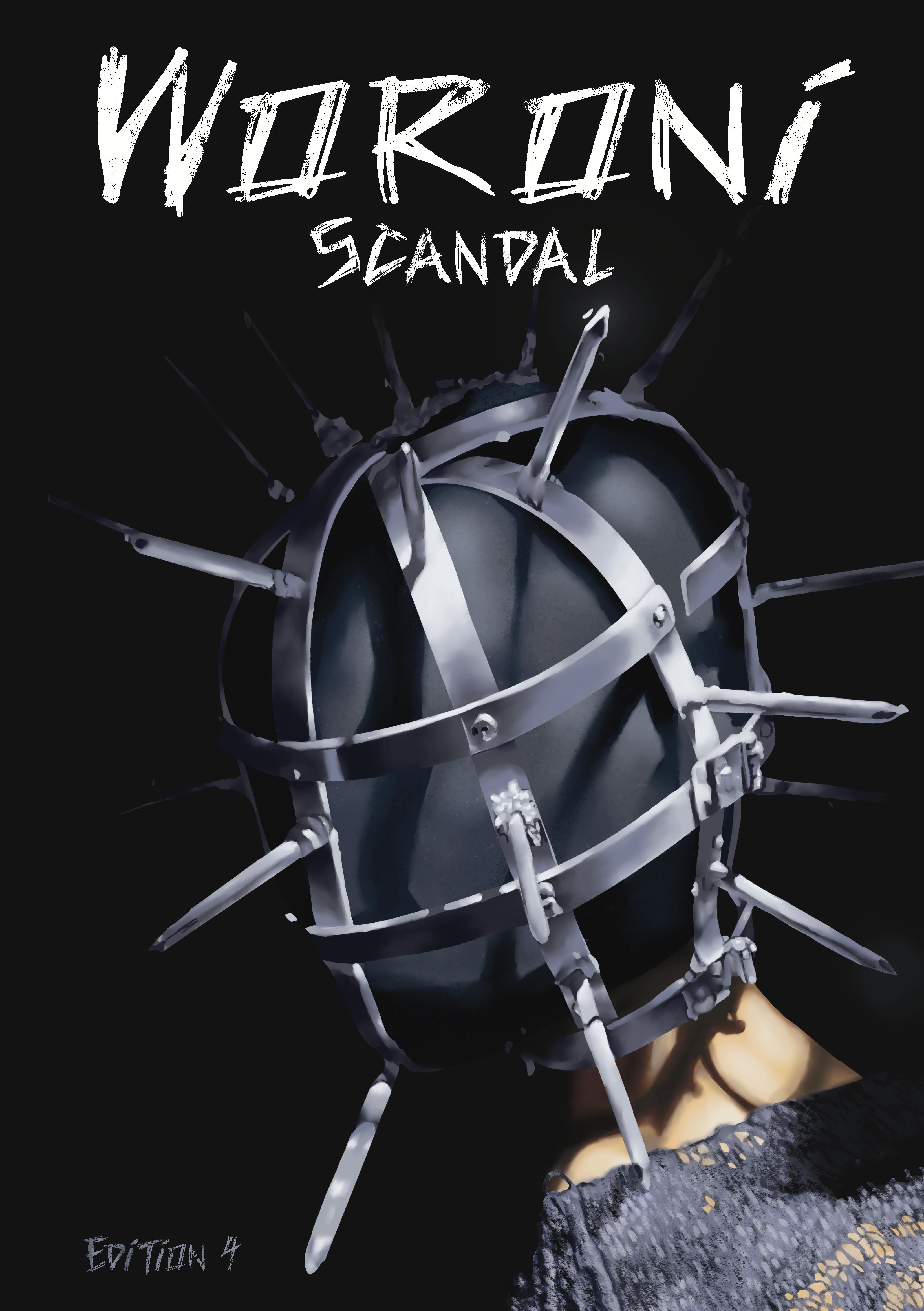
Management
Brianna Collett
Christopher Jackson
Benjamin Van Der Niet
Hima Panagati
Jeffrey Liang
Arabella Ritchie
Art
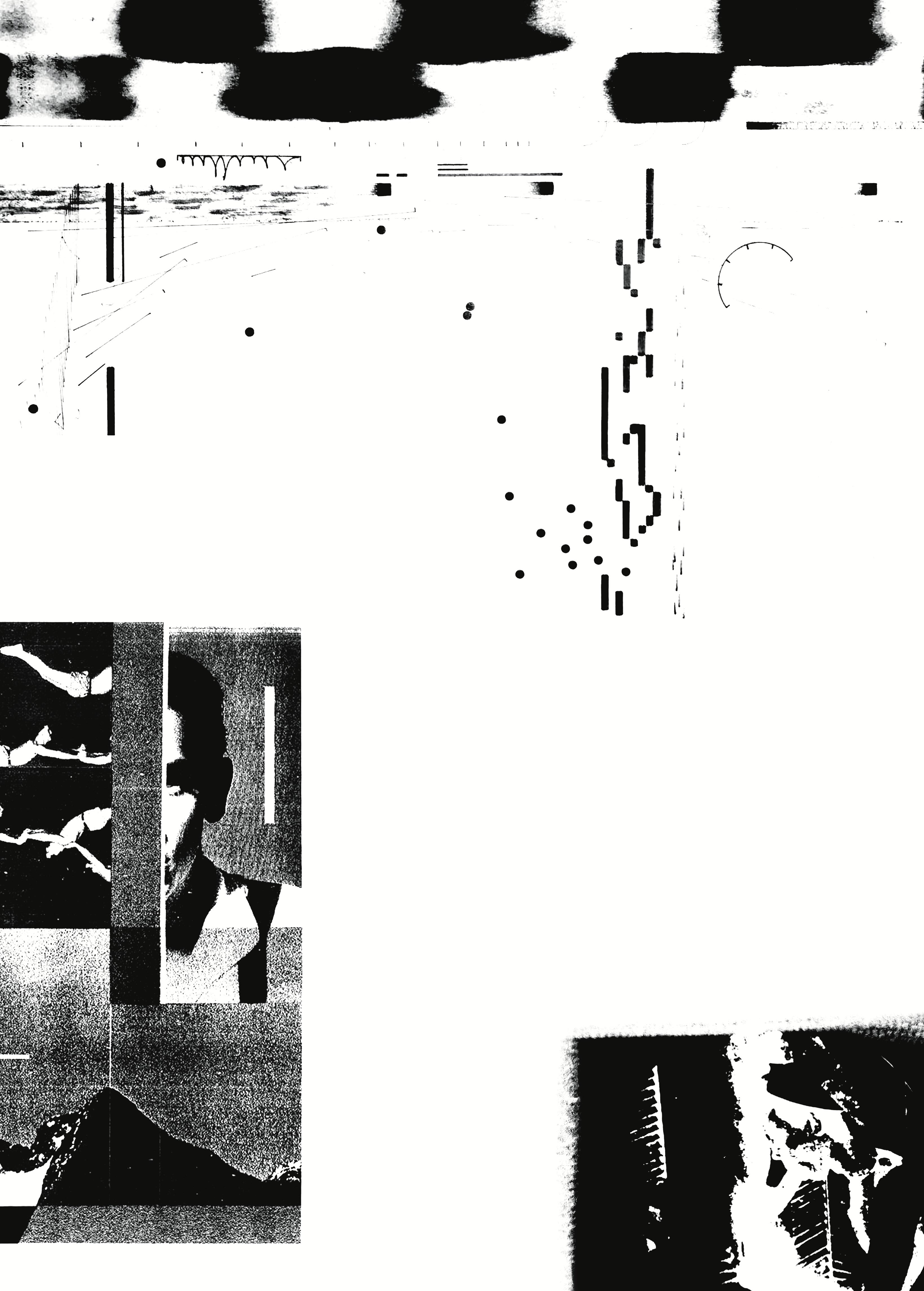
Angel Du
Cynthia Weng
Vera Tan
Amada Lim
Radio
Nat Johnstone
Alexander An
Bridget Fredericks
Natasha Kie
Cate Armstrong
Punit Deshwal
Content
Emmanuelle Dunn-Lewis
Holly McDonell
Lara Connolly
Perpetual Nkatiaa Boadu
Daniel Pavlich
Ruby Smuskowitz
Manny Singh
Claudia Hunt
Aala Cheema
Luca Ittimani
Olivia Chollet
News
Zelda Smith
Dina Luate-Wani
Sophie Hilton
James Donnelly
Raida Chowdhury
Shebani Jeyakumar
Eleanor Rowland
Holly Johnson
Jasper Harris
Sam Kearney
Siobhan Perry
TV Eliz So
Kerry Jiang
Yulia Liu
Kaz Marsden
Claire Oberdorfer
Sarah Patience
Benjamin Springhall
Bohong Sun
Sharlotte Thou
Scandals
We




PwC:
Books
Scandals
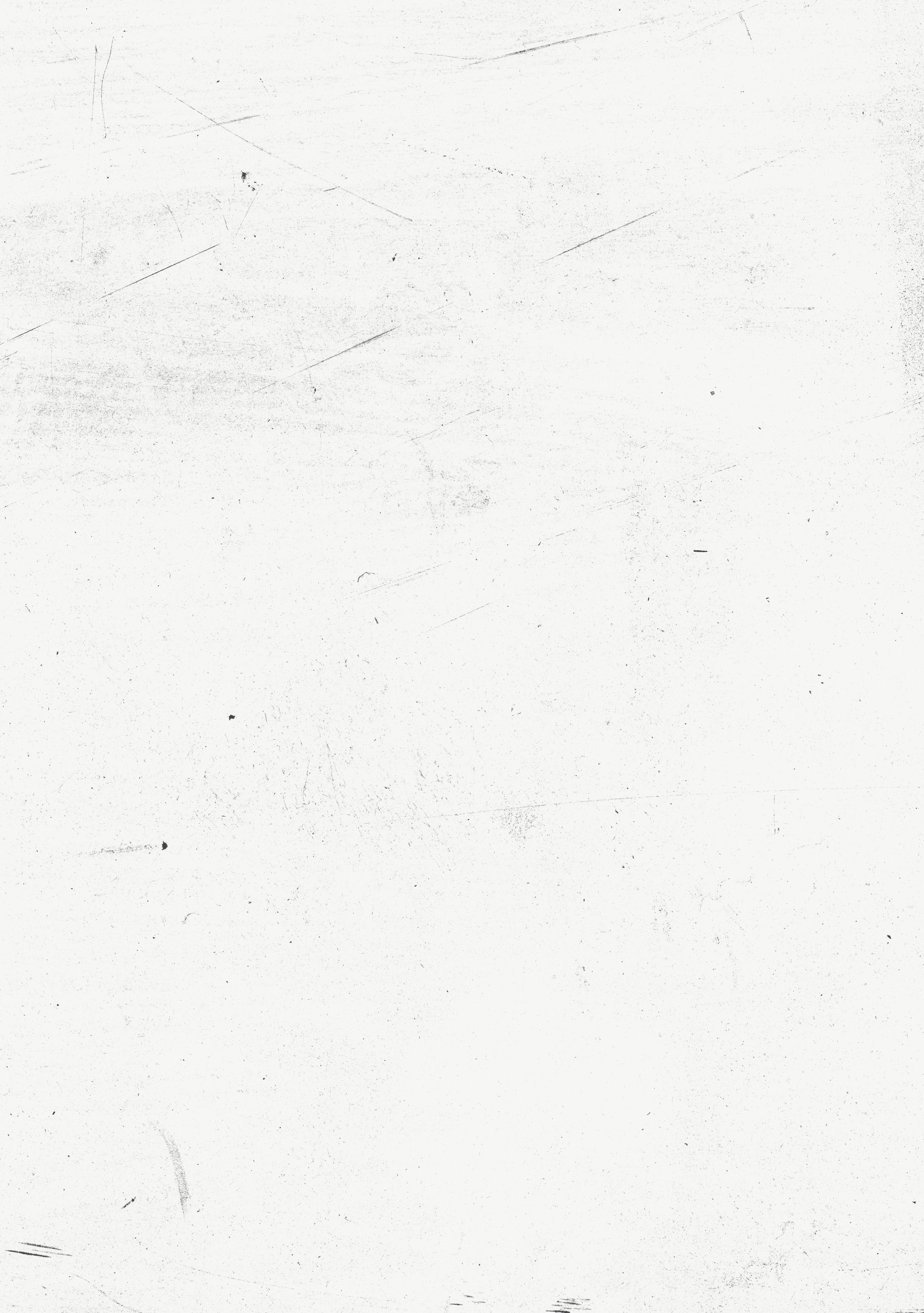
9 13 37 38 43 44 45 46 50 52 56 60 62 17 21 24 26 32 News To Accredit or Not to Accredit? ANUSA Becomes First Student Union to Pay Full NUS Fees Amidst Heated Debate “I Was Told Giving Birth Would Make it Better” - A Step Forward in the Struggle for Endometriosis Care ANU’s Implementation of its Disability Action Plan Lagging Significantly with an Entire Rewrite Proposed Scandals of the Heart These Feminine Wiles Illicit Affairs Untitled Queer Qupid
Hope Your Mother Cried Herself to Sleep When She Found Out
You Did
Trans Person Doesn’t Have Time for Your Bullshit Questions
ANU Confession
I
What
Local
An
of the Powerful
Few Bad Apples
A
Don’t Talk About the White Australia Policy
Neither Disappointed Nor Angry
and Bombs: On Ted Kaczynski’s Philosophy
Price
The
Culture
Female Gaze
of the
The
Her
Like Metal
Crossword Contents 3
Don’t Forget
You Can
Punk
Letter From the Editor
When I read on the Woroni Discord (yes, Discord) that the theme for this magazine was Scandal, I pondered the last time we had a truly engrossing scandal. That very same day Tom Seymour revealed his involvement in the still ongoing PwC tax scandal and three days later resigned with immediate effect as CEO of PwC Australia. This reminded me of the pace and ferocity that scandals can possess. I want to take this chance to share with you three scandals, big and small, that I found involving ANU student organisations.

In May 1971 the Commonwealth Postmaster-General, Sir Alan Hulme, declared an issue of Woroni to be ‘obscene’ and ordered that any copies of the issue sent through the post be destroyed. One of the offending articles was titled ‘The Intelligent Young Man’s Guide to Fetishes’, the other was an entry from a regular column by an anonymous author, Frug. The story received widespread coverage in The Canberra Times.
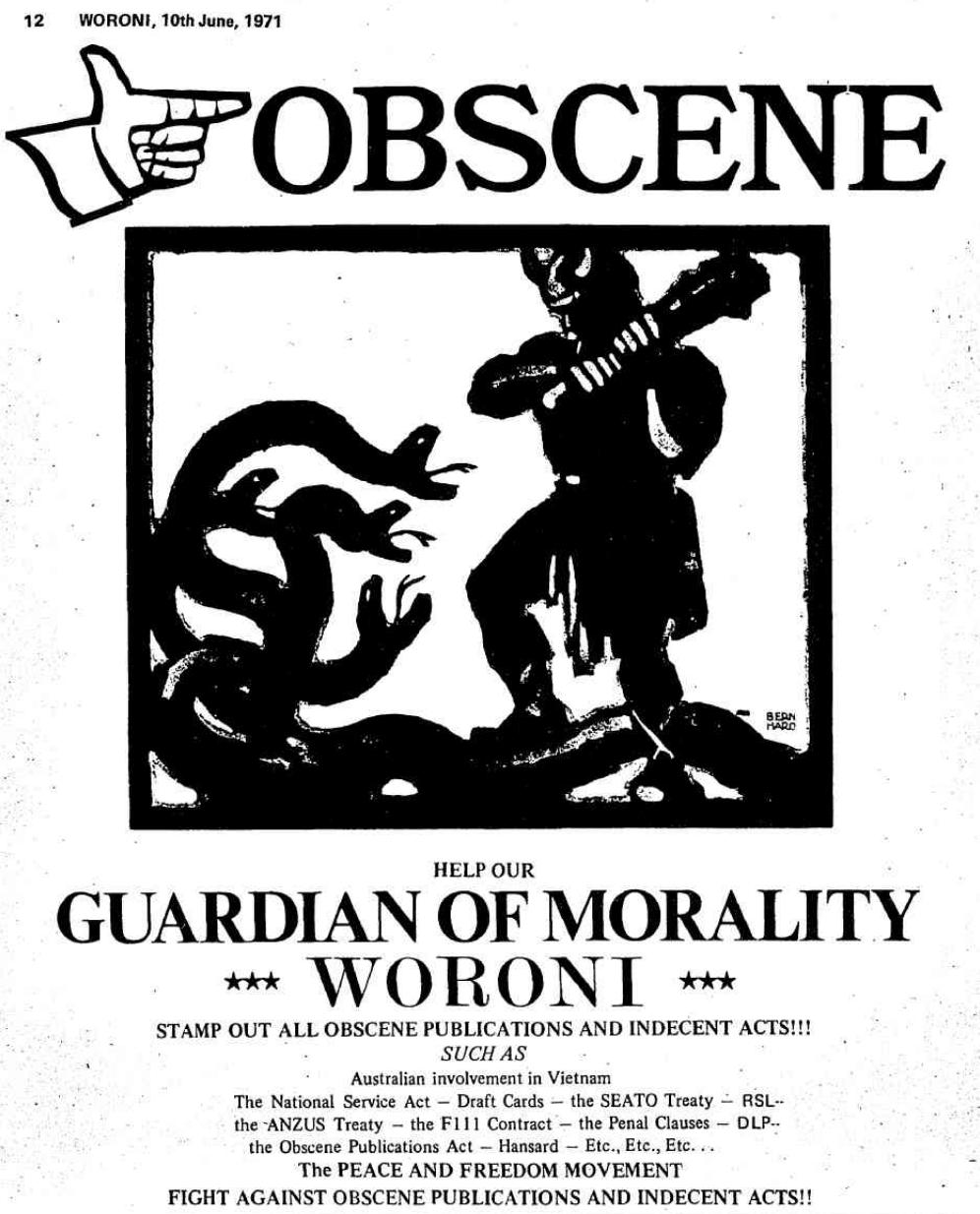
In 1996 five wads of ballots were found in an ANUSA election ballot box all giving their first preference to Daniel Jenkins, the presidential candidate of the ‘Rage’ ticket. Mr Jenkins was subsequently disqualified from the election by the Returning Officer, however Matt Tinning of the ‘Counter Attack’ ticket had enough votes to win either way. The scandal was dubbed ‘Wadgate’ by Woroni and made the front page of The Canberra Times as well as being raised multiple times in the Australian Senate.
In late 2012 it was revealed that widespread fraud conducted over two and a half years by an office-holder of ANUSA, Woroni and the ANU Interhall Sports Organisation (ISO) had resulted in approximately $126,000 of student money being stolen. ANUSA lost nearly $74,000, Woroni $38,000 and ISO $18,000. The issue was investigated by the Australian Federal Police and the organisations received insurance payouts to cover part of the loss. The story was reported by Woroni and The Canberra Times
As Semester 2 graces us, may we hope that Woroni is not ‘obscene’, ANUSA does not have to confront electoral interference (plug our upcoming election coverage) and no fraud is committed against our student organisations.
I would like to thank and congratulate everyone that made this edition possible, the wonderful Contributors, our Content Sub-Editors, Artists and News Reporters and our Editors (particularly Lizzie Fewster and Jasmin Small).
To all our beautiful readers, may your semester be scandalous in all the best ways.
Matthew Box, Managing Editor
4.


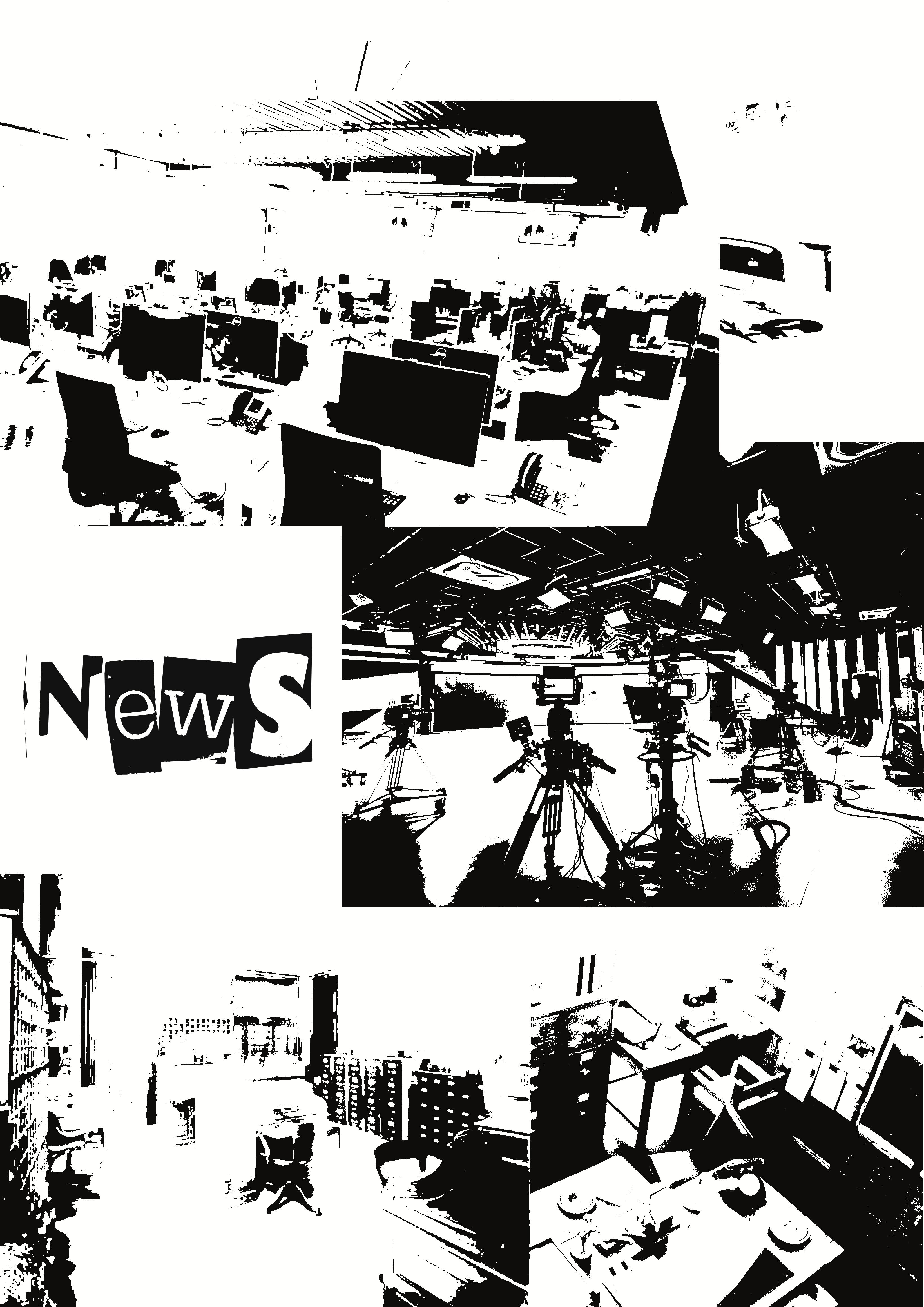
6. Art by Jasmin Small
To Accredit or Not to Accredit? ANUSA Becomes First Student Union to Pay Full NUS Fees Amidst Heated Debate
Alexander Lane
Whether the student union, ANUSA, decides to accredit with the National Union of Students (NUS), or to even affiliate with the NUS has become a perennial debate at SRCs and general meetings. Students from the Labor factions on campus have moved twice now to raise the amount of money ANUSA pays to the NUS. At Week 12’s Special General Meeting (SGM) they successfully raised it from $20,000 to the full amount, just under $34,000. What exactly does this mean for students, and why are some students so eager for ANUSA to pay more?
The National Union of Students is composed of many smaller student unions across the country, who pay an annual fee for the right to vote on NUS policy. The NUS has existed since 1987, and replaced the Australian Union of Students which existed from 1937 until 1984. As the national body representing tertiary students, the NUS has been the face of many student campaigns, including against voluntary student unionism in the 2000s. Currently, its campaigns focus on lowering the age of independence, stopping the indexation of HECS fees to inflation, and addressing the housing and rental crisis.
However, the NUS is not without controversy. Three factions, Student Unity (Labor right), National Labor Students (Labor left) and Socialist Alternative dominatee the national union. They influence its policy at its annual National Conference, and its campaigns by holding office bearer and executive positions. Over the last two years, ANUSA’s executive has repeatedly and publicly questioned the worth of affiliating with the NUS. A perceived hyper factionalism and the career aspirations of Labor members led successive ANUSA presidents, Christian Flynn and Ben Yates, to criticise it heavily in their post-conference reports.
For several years ANUSA has been largely independent and most of its NUS delegates have not aligned with a faction.
With ANUSA presidents proving some of the staunchest critics of the NUS, it may come as a surprise that the union will now pay double its usual contribution to the NUS. Harry Danton-Jack and Isabella Harding moved a motion at the SGM to compel ANUSA to pay its “union dues.” Danton-Jack ran on the unsuccessful Labor-affiliated ticket last year, as did Harding who is also the NUS Disabilities Officer.
Late last year, Labor students moved a similar motion at an Ordinary General Meeting (OGM). This was to raise ANUSA’s contribution from $10,000 to the full amount, however following an amendment from Welfare Officer Kai Dreyfus-Ballesi, it was settled at $20,000. Now, Labor has achieved its original aim. With all undergraduate students able to vote in general meetings, both SAlt and Labor can tip the scales in their favour through numbers alone. Indeed, after the motion was passed at the SGM, several Labor students left the meeting.
Harry Danton-Jack, when speaking for the motion, argued that ANUSA not paying its full fee was a “scab” action. A scab is a traditional English term for a worker who crosses a picket line, diminishing the efficacy of a union strike. Nowadays, the term is used to apply to workers and unions who are perceived to betray the union cause, including working with management or by not fully supporting the union.

7.
However NUS General Secretary Sheldon Gait confirmed that ANUSA will become the only student union in the country to pay its full accreditation amount. While other unions pay more, not a single one pays its “union dues.”
Danton-Jack also argued that the NUS receives national media attention – both its President and General-Secretary have appeared on the ABC and morning shows discussing HECS indexation – while ANUSA does not. On this point, ANUSA President Ben Yates chimed in to say that Phi O’Neill, the ANUSA general secretary, will be appearing on ABC radio in the coming weeks.
Nonetheless, all of the speakers for the motion stressed the national focus of the NUS and its ability to organise greater protests than ANUSA. Advocates pointed to the Posie Parker counter-protests earlier this year, and the campaign against HECS indexation. The NUS’ federal budget protest, which around 100 students attended, received national media attention.
The perceived efficacy of the NUS clearly shapes students’ preferences about how much ANUSA should pay. ANUSA President Ben Yates lauded SAlt LGTBIQA+ Officer Grace Hill’s work on the Posie Parker protests, but contrasted this with the overall ease of working with the NUS and its president, Bailey Riley. Yates attests he typically struggles to get email responses from Riley, one of two full-time elected members.
Additionally, an NUS media release included the contacts for all other NUS State Branch Presidents except for ACT Branch President Luke Harrison. All other State Branch Presidents are Labor-aligned, as is Riley, while Harrison is the only independent.
Others, such as General Representative and NUS voting member Skye Predavec, criticised the NUS’ hyper factionalism as signs of a stagnated, ineffective organisation. Such hyperfactionalism included several instances of physical violence and inappropriate language at NUS’ National Conference last year which this reporter witnessed. Harding argued that factionalism is in fact the result of underfunding, and that she had been pushed to rely on her faction (NLS) after quickly burning out in the role.
A question that immediately came up at the SGM and online later was how to pay for the full accreditation fee. ANUSA’s new budget after PARSA’s defunding is around $3 million. Ashlyn Horton of National Labor Students argues that ANUSA should stop funding social events, which accounts for around $10,000, and could spend less on leadership and professional development expenses, which account for around $30,000.
Ben Yates pushed back against these suggestions. Yates pointed out that the ANUSA annual survey shows students value social events, and that one aim of this budget line is to better engage with postgraduates later this year. The leadership and professional budget line that Horton refers to actually funds NUS Annual Conference attendance and NUS Presidents’ Conference attendance. Yates added that it also includes ANUSA staff continuing professional development required for the Community Legal Centre.
Horton further added that if no money could be found in this year’s budget, ANUSA could dip into “their (millions of dollars) of reserves.” Yates agreed that if revenue cannot cover expenditure, this is his preferred option, but criticised NLS for “being among those crying financial mismanagement” when ANUSA planned to use its reserves last year, only to push for the same strategy this year.


8.
Last year, ANUSA intended to use its reserves to cover a $402,000 deficit, which was then alleviated by funding from the Student Services and Amenities Fee (SSAF) reserve pool. By the end of the year, ANUSA had increased its reserves by around $30,000.
It’s unclear what the financial impact of the extra $14,000 is on the NUS. General Secretary Sheldon Gait told Woroni that the NUS costs around $420,000 to run and that any money above that goes towards campaigns, projects, research and other projects. Gait said this would amount to around $50,000 this year. Presumably, the extra $14,000 will contribute to the latter pool.
Gait confirmed that he expected a small increase in affiliation revenue this year, but noted that “Overall affiliations have trended down since 2018.” He blamed this on financial cuts and increased service demand, and explained that the NUS was campaigning for a Minimum SSAF requirement to student organisations, to help alleviate these pressures.
As the cost of living crisis continues to worsen, the financial pressures on student unions will likely continue to increase. Other not-for-profits have reported some of the highest numbers of people accessing their services.
Last year, Woroni asked the previous General Secretary how many unions would need to disaffiliate from the NUS before it collapsed. Emily Sagolj, the General Secretary at the time, could not give an answer, but Gait said that if “more than one other of our top member organisations were to disaffiliate this would severely impact the NUS’ financial stability”.
This includes, for example, the University of Melbourne Student Union which pays $90,000.

Gait thanked the ANUSA Council and Yates for being the “the first union in the last 5 years to fully pay their invoice.”
Every year, ANUSA debates and discusses its affiliation with the NUS, and how much it is willing to pay in accreditation fees. While some, such as Predavec, floated the idea of reversing the SGM motion at an SRC, ANU students can rest assured the debate will, at the very least, rear its head again next year.

9.

10. Art by
Angel Du
“I Was Told Giving Birth Would Make it Better” - A Step Forward in the Struggle for Endometriosis Care
Sophie Hilton
The first Endometriosis and Pelvic Pain GP Clinic in the ACT is set to start taking appointments in August/September this year. The clinic will be one of twenty to be funded across the country, following the announcement from the Assistant Minister for Health and Aged Care, Ged Kearney, in March. It will be run by Sexual Health and Family Planning ACT (SHFPACT), located just up the road from ANU at 28 University Avenue.
The funding, which will see over $700,000 designated to each clinic over four years, provides a much needed boost to a dire health care landscape, where despite the high prevalence of endometriosis and chronic pelvic pain, average diagnosis times and treatment waitlists stretch several years.
In Australia, one out of five people assigned female at birth are affected by pelvic pain, and one in nine with endometriosis. As it stands, the average time for endometriosis diagnosis is just under seven years, and official diagnosis is available only through an often costly laparoscopy (keyhole) surgery and/or biopsy, where tissue is sampled and then analysed by a pathologist.
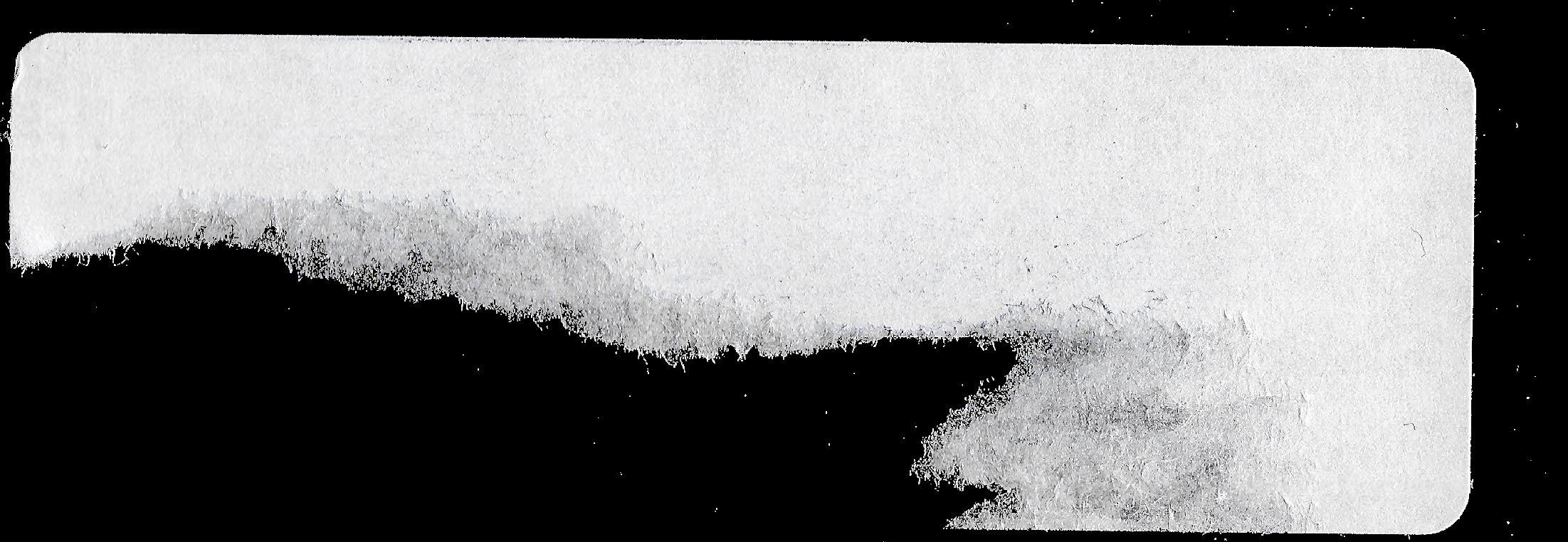
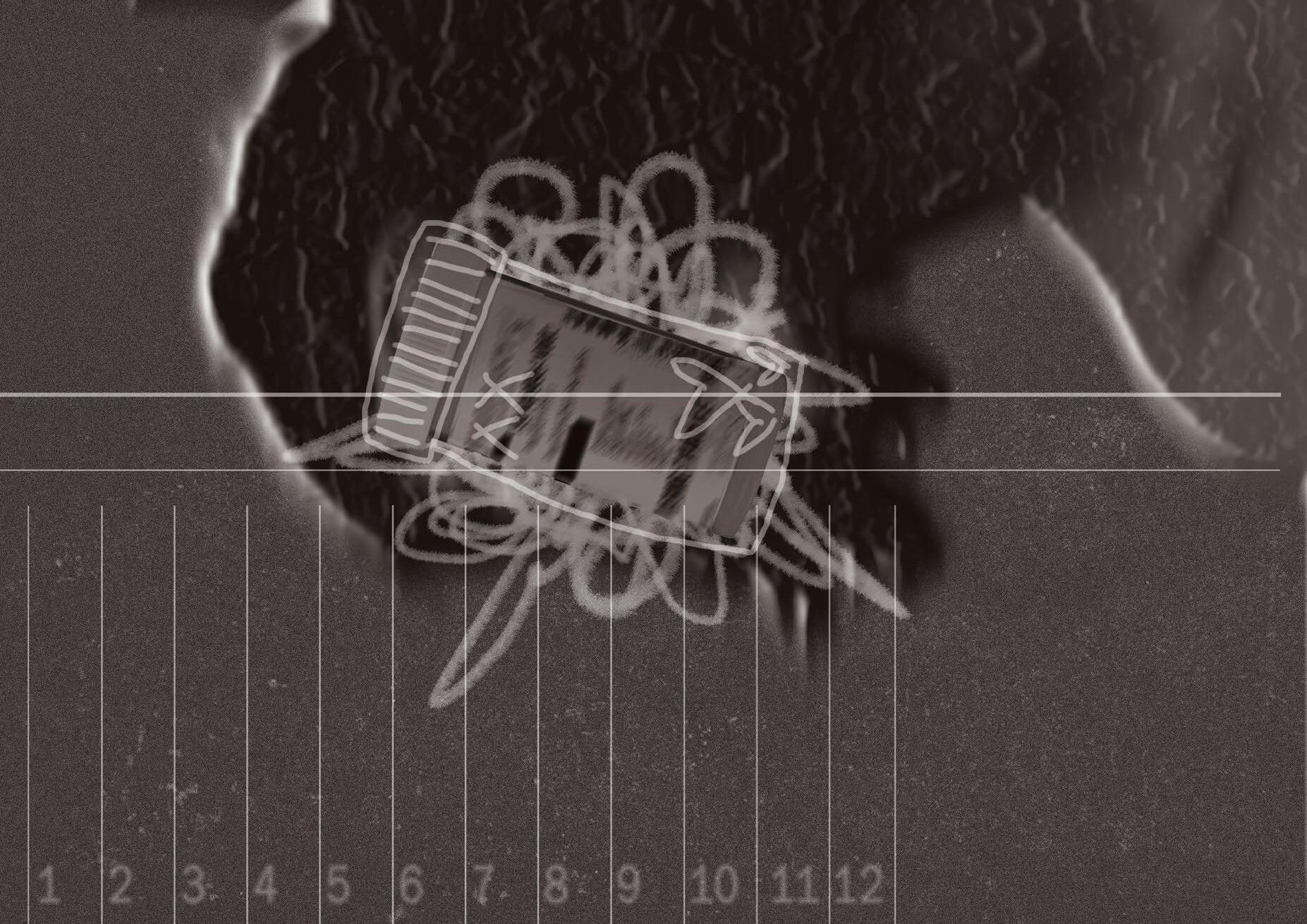
In a media statement responding to the funding announcement, the Capital Health Network CEO highlighted how the clinics, as a first line of defence against endometriosis and pelvic pain, will aim to “reduce diagnostic delays and promote early access to multi-disciplinary intervention, care and treatment” in the ACT, as well as increasing awareness of the conditions.
Executive Director of SHFPACT, Tim Bavinton, told Woroni that despite the fact that the funding is “not a lot of money in the scheme of the healthcare system to do it”, the “team wants things to be very different in five years’ time than they are right now for many people.”
Art by Amanda Lim
11.
Art by Amanda Lim
ANU student, Remi Prica (they/them) talked to Woroni about their experiences with endometriosis. Prica emphasised the difficulty of getting doctors to take their pain seriously, withstanding ten years of being told painful periods were “normal” before finally being referred to a specialist at the age of twenty-three. Prica has now been on a further specialist’s waitlist for three years.
Bavinton says that SHFPACT will build on their “long experience in reproductive and sexual healthcare” to not just “offer an additional clinical service” but make “sure we have the skilled allied health, nursing, GP and other specialist medical workforce we need working together to support the way patients move through the system, get the right kind of care at the right time, and aren’t left on waiting lists without other supports.”
Another ANU student, Elizabeth (she/her) expressed a similar sentiment to Prica. “When I noticed something was wrong with my menstrual cycle I was told by several different doctors that either I had a low pain tolerance or I was just finally properly ovulating and that’s why it was different.”
Both students commented on how ill-equipped the health care system was when it came to reproductive health, other than childbirth. Elizabeth shared her difficulties in trying to get treatment on campus, citing that her GP at the ANU Medical Centre was “particularly unhelpful”:
“I was after documentation for an Education Access Plan for the chronic condition and despite my records stating suspected endo they refused and told me that I probably just didn’t handle pain well and I should take more painkillers.”

Other than painkillers, Elizabeth attests that the predominant treatment is “experimenting with birth control until it’s manageable.”
For some like Prica, who “can take painkillers and still be crying from the amount of pain [they are] in”, and finds that both painkillers and the birth-control pill affect them “immensely in other ways”, the lack of knowledge and alternate treatment options leaves them lost. According to Prica, “people who had experienced pain like me said the only thing that relieved it long term was giving birth. This is a failing of the health care system.”
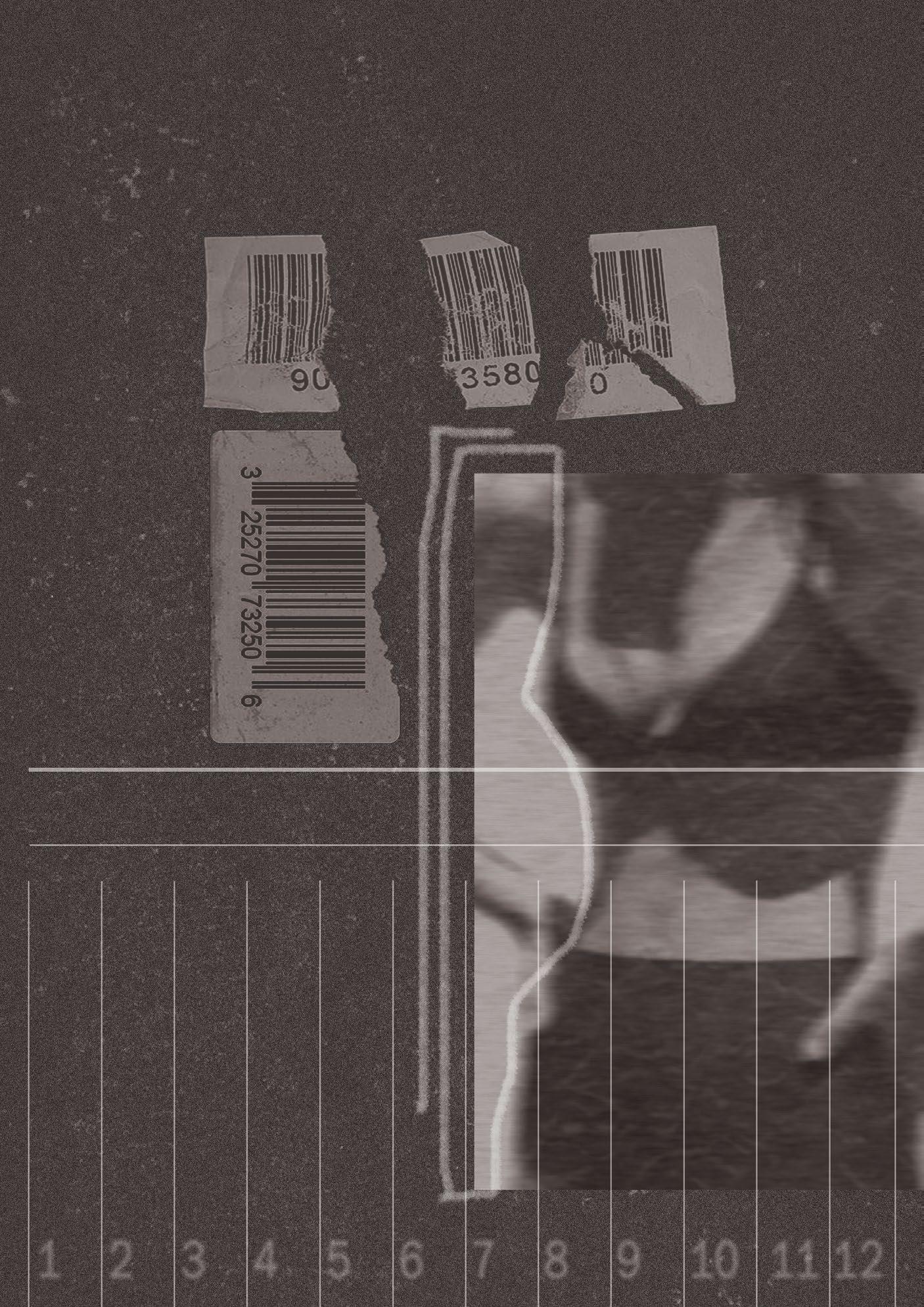
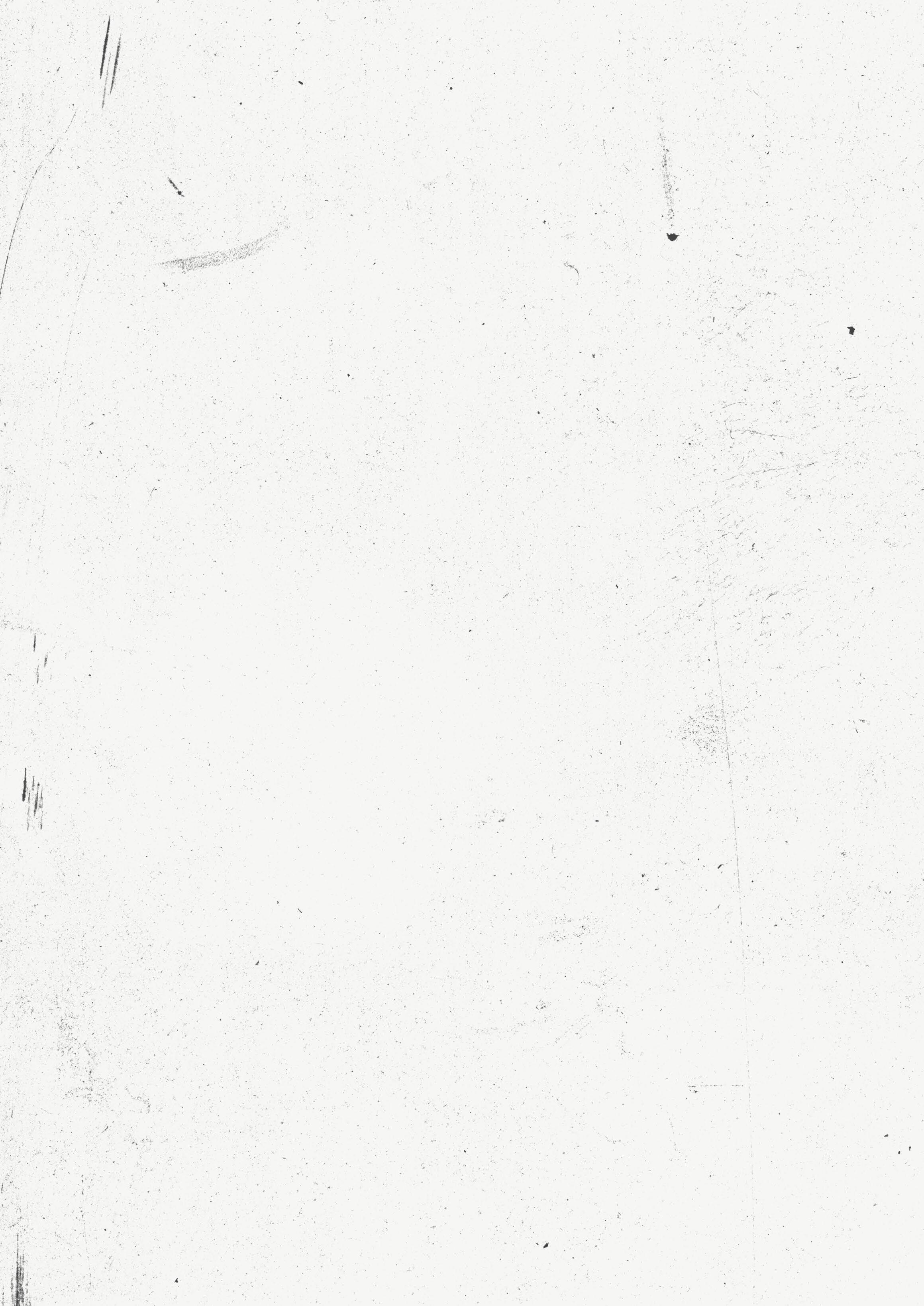
12.
Labor’s recent budget provided a much-needed injection to the GP system, where bulk-billing doctors are currently few and far between, but did not expand on Medicare items related to reproductive health. More generally, the Budget included measures dedicated to “streamlining and modernising” the Chronic Disease Management Plan system, which has often been criticised by chronically ill people.
The funding will go towards supporting clinicians, professional development, as well as health education. Yet as Bavinton notes, “it’s going to take years not weeks to start to address some of the gaps and needs we have, and in the post-COVID years we have big workforce shortages in healthcare.”
Prica emphasised the financial and social burden of constantly buying painkillers and taking time off work and social events due to endometriosis pain. For students already struggling with their current cost of living, the added need to treat an ongoing and financiallydemanding medical condition can make matters significantly harder.



Bavinton confirms that at this point, SHFPACT intends to offer the same financial concession rates for students in the new clinic as they do for their other services. Under twenty-ones and full time students under twenty-five are currently entitled to a free, ACT Government funded nurse service or a concession rate which does leave some out-of-pocket costs. Although Bavinton assures that they “would love to bulk-bill instead… the freeze on the Medicare Benefit Schedule (MBS) rates over the last 10 years has meant this isn’t financially possible.” He encourages “anyone who needs care and is concerned about cost to contact us, we will always try to find a way to get the service provided.”
The new clinic is clearly just a start in addressing what is a complex and wide-reaching gap in the health system, but as a policy area that has been so broadly neglected, it’s a significant step regardless.
Until the specialised clinic opens, people who are suffering from pelvic pain and painful periods can continue to make appointments at SHFPACT, especially when these are new symptoms.
Art by Amanda Lim
13.

14. Art by
Cynthia Weng
ANU’s Implementation of its Disability Action Plan Lagging
Significantly with an Entire Rewrite Proposed Alexander Lane
Documents obtained under Freedom of Information (FOI) laws have revealed that the ANU is lagging behind on the implementation of its own Disability Action Plan (DAP). The review identifies that a majority of actions are either behind schedule or have not begun at all, in what student representatives argue shows the University’s disregard for disabled students.

The Mid-Plan Review Report was presented to the Inclusion, Diversity, Equity and Accessibility (IDEA) Governance Committee in April this year.
The ANU’s DAP contains 68 action items and was initially proposed to exist from 2020 to 2024. However, of these action items:
• 28% are complete (green)
• 41% are progressing but behind schedule (amber)
• 31% have not started, or have stopped (red)
The authors identify five key barriers the DAP has faced, while also acknowledging that the COVID-19 pandemic impeded implementation. Those barriers are: resourcing, governance, communication, policy and procedure, and the development and structure of the plan itself.
The plan begins by suggesting that “the high proportion of amber and red action items is in part due to re-prioritisation and resourcing demands posed by COVID-19.” However, it goes on to discuss key structural issues that reflect more on University planning than the pandemic. This includes the fact that the DAP was not included in budget plans, workforce planning or in other appropriate University plans and strategies, or that some areas of the University were assigned actions without being aware of it.
Additionally, the University finalised and released the DAP in June 2020, by which point many states had already experienced lockdowns, and a majority of Australia had internal border restrictions. Just a year later, the University would tell students living on campus that another series of lockdowns was “foreseeable” and hence they would still have to pay rent even if they legally could not enter the ACT. There is the possibility, therefore, that the University could have reasonably foreseen the impact of COVID-19 on DAP actions.
Overall, the report points to systemic issues in the implementation of the DAP. When the DAP was initially created, the plan was that the responsible areas of the University would identify the staffing and budget required. However, “...in most cases the DAP was not incorporated…” into financial planning or forward planning. This accounts for delays in at least ten actions.
15.
Despite the University’s public commitment to the Action Plan, it did not integrate it into its own strategic planning and performance framework. This means that the University did not include its own DAP into its University-wide planning systems, a step which is often considered key to implementing action plans. Additionally, the Disability Action and Inclusion Working Group (DAIWG) became a “catch-all” group “for any and all accessibility issues” which distracted it from implementing the DAP. This also happened with Access and Inclusion, which the report notes has tasks under the DAP that it is ill-suited to achieve.
Because of COVID-19, there was no launch of the DAP, and the review argues staff were distracted by more pressing issues. Yet, the report goes on to note that poor communication of senior management’s commitment to the DAP may have meant other staff have not prioritised it.
Yet the report also points to issues within the DAP. Some of the outcomes, which measure whether an action has been met, do not accurately reflect the action. This has led to the action being marked as complete when “...it is not possible to say that the action has been totally realised.”

ANUSA’s Disabilities Co-officers, Maddi McCarthy (she/her) and Mira Robson (she/ her) represent the ANU Disabilities Students’ Association on the DAIWG. They told Woroni that they always had the opinion that there was not much concrete work achieved on the DAP. They continue to receive complaints from students directly related to some of the action items.
They added that the DAIWG appears to be taking the mid-plan review report seriously and that “they might have been surprised or disappointed with the progress so far.”
Nonetheless, the Co-officers did point out areas that they found particularly important, and were especially disappointed to see little action on. This included limited disability awareness training for staff, which they contrasted to the relative progress on staff training around other marginalised groups. They pointed out that the University created the DAP with minimal student consultation, with no surveys sent out and only the Officers being in a position to provide feedback. The report highlights the lack of accountability and auditing measures, and McCarthy and Robson echo this, as it “means ANU is not held accountable for making their events accessible to all students.”
A key area of the DAP, and also an area which has seen little to no movement, is ANU’s built environment. The Co-officers pointed out “that even the recent builds (e.g. Kambri, Yukeembruk) are not accessible, through things like non-accessible doors and lack of wide paths.” Meanwhile, a number of older buildings still require renovations, the representatives argued.
Asked about the lack of resourcing explained in the report, the Co-officers described it as a slap in the face, and that it shows “a disregard for disabled students on campus.” They explained that “If the University truly cared about upholding their promises…they would not forget about resourcing the DAP.”
Across the DAP, there are two key areas where little progress has been made: in inviting feedback and consultation, and in auditing the University’s physical environment.
16.
The DAP commits the ANU to an annual survey of students and staff on the University’s accessibility measures, as well as regularly inviting disabled students to provide feedback to the University, and providing a source of feedback on accessibility issues. None of these reporting avenues have started, compounding the issue of limited student feedback that the Co-Officers highlighted.
Physical accessibility is a key aspect of the DAP. Despite this, no audits of ANU buildings or residences have yet occurred, causing spill-on effects as there is no prioritisation of which buildings require renovation. The University has not yet audited future building projects to ensure they meet accessibility standards.
An ANU spokesperson told Woroni that the University regrets the impact of the DAP’s slow implementation on students and staff. The ANU attributed the lack of integration of the DAP into the University’s Strategic Planning Framework as a result of the COVID-19 pandemic and the resourcing required to continue operations during the pandemic.
Ultimately, the report argues “the DAP could benefit from a re-write at this stage of its implementation with two years still remaining.” It acknowledges that this would delay the implementation of some items, but that a new DAP “...would also improve our [ANU’s] ability to shift the dial on disability inclusion and accessibility at ANU.”
The University claims it will ensure “the relevant actions are reassigned, rewritten, or otherwise updated to be more actionable. The IDEA Governance Committee has committed to this and is in the process of forming a DAP Reinvigoration Taskforce to action this work.” This taskforce will conclude its work by the end of 2023.
The University plans to form a second taskforce, responsible for developing the next DAP, in early 2024. The creation of two task forces, within such close proximity, may create a greater workload for the already overworked student disability advocates at the University. The ability of the University to balance incorporating the lived experience of students, without creating burnout from uncompensated consultation work, remains to be seen. The current DAP aims at wider student and staff consultation, which may be achieved next time round.
The University spokesperson thanked “...students for their continuing work and advocacy in this space” and reiterated its commitment to accessibility and inclusion for all. Students will see what this commitment looks like in practice this year, especially as the ANU “...is committed to being transparent” about the slow progress.
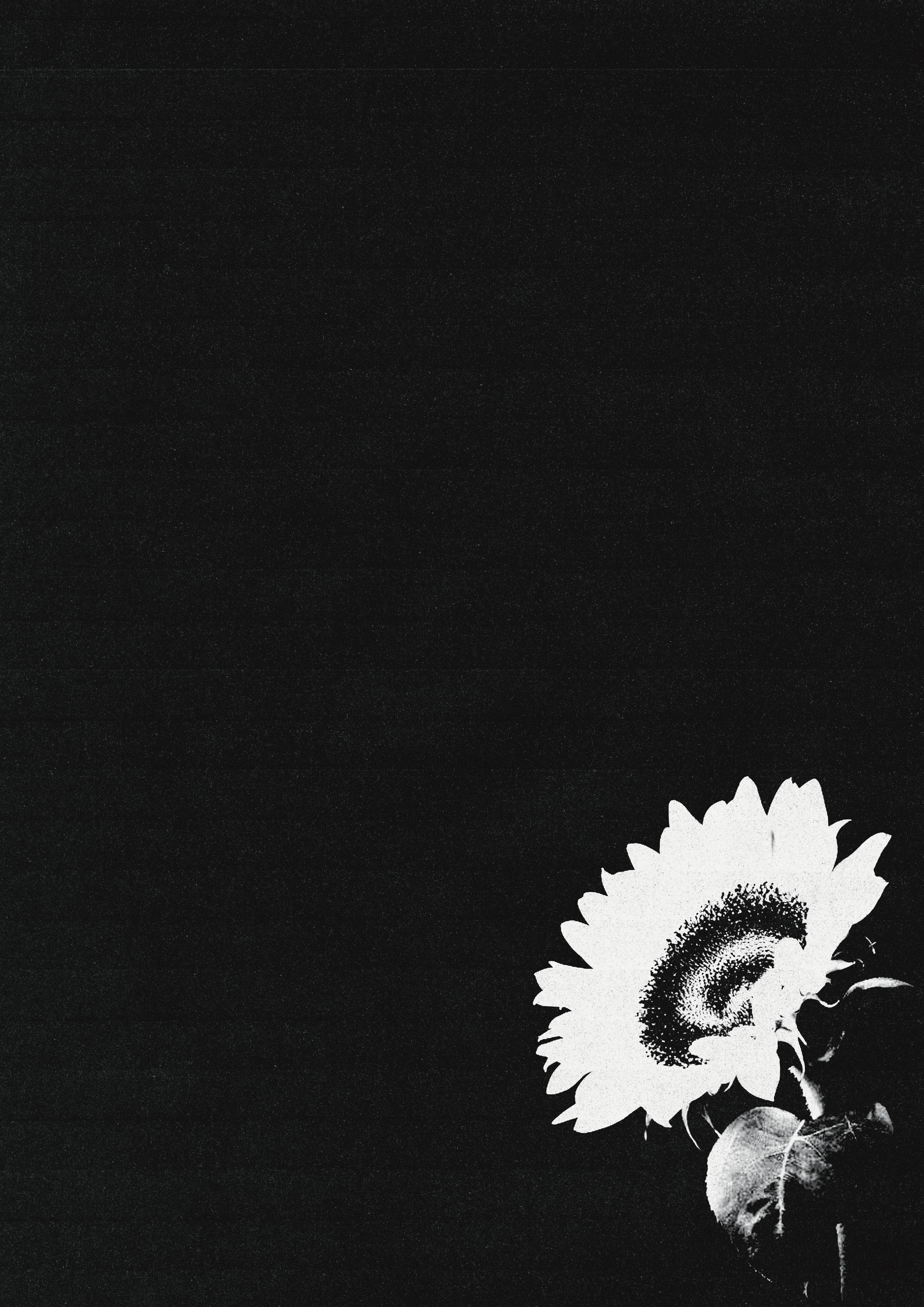
17.
Art by Jasmin Small
Art by Jasmin Small
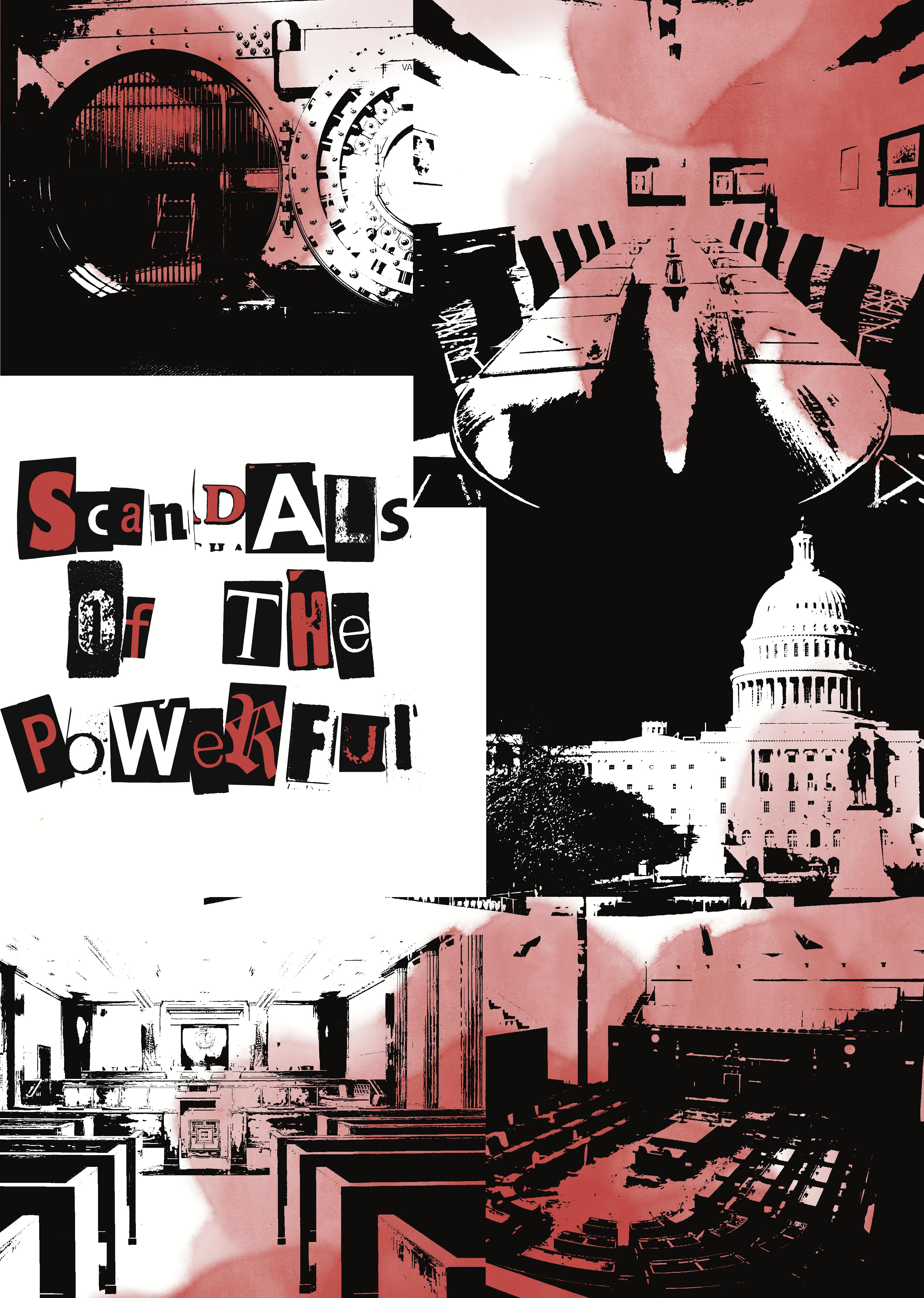
18.
A Few Bad Apples Raida Chowdhury
Content Warning: Islamophobia, Xenophobia, Racism, War, War Crimes and Terrorism
My high school politics and law teacher was a peculiar man. We will call him Dan. His classroom ceiling was covered with flags of almost every country, but he was severely racist. He was a white, middle-aged man and a publicly-declared Trump supporter. He would frequently play the devil’s advocate in class, or so he would claim.
My most prominent memory of him was when he declared, unprovoked, “The most dangerous threat to the world right now is Islam.” Never mind climate change.
One student, we will call him Charlie, was of East Asian descent. Although he wasn’t Muslim, Charlie would later tell me that Dan’s comment made him furious because similar rhetoric was used to justify xenophobia against Chinese Australians at the time.
Charlie argued back, “so when we go to the Middle East and kill innocent civilians, who is the threat then?”
“Those are justified. Military work can be a bit tricky,” Dan confidently replied. Note: he had no military experience.
Dan’s comments terrified me on two levels.
First, he held a torchlight on my religion, my identity, the prayer mat in my room, the Qurans on our bookshelves, my father’s name Mohammad, and my mother’s hijabs. I felt immense shame and a drastic need to hide; to hide the mat, hide the Qurans. They are going to find us, and when they do, they will call us a threat, and they will kill us.
The second: the ease with which he justified killing.
This was July 2020. Four months later, the Brereton Report was released.
The Brereton Report detailed alleged war crimes committed by the Australian Defence Force (ADF) during the war in Afghanistan. It found 39 innocent noncombatant Afghans were killed by the Australian Special Forces in 23 incidents. Two were tortured. None of the incidents took place during battle. Special Forces soldiers believed they were entitled to kill, and subordinate soldiers followed through on orders with unflinching obedience.
The report was a scandal. It damaged the Australian public image: our publiclyfunded military, with all its expensive weapons, was going bat-shit in Afghanistan. What ensued was the first stage of grief: denial. Denying that anything went wrong.

19.
The ADF’s redemption proposal to remove any meritorious citations of Special Force soldiers who served in Afghanistan provoked widespread anger. The concept that our men could be humiliated was too painful. The concept that our men could slaughter and humiliate Afghans, however, lived comfortably in our conscience.

In many ways, these men behaved in an Australian way: larrikin, rule-breaking, rowdy and xenophobic. Australia did not see them as war criminals; they were boys being boys.
Excusing war criminals is nothing new in Anglo-Celtic countries. America does it too, to a more damning extent with their Presidents formally pardoning war criminals. It comes with the double standards entrenched deep in first-world nations. We love your food, but we hate you. Terrorism is bad, but the war crimes we commit aren’t that bad.
Scholars argue that public opinion on war crimes changes when the public is exposed to the details of the crimes. After the arrest of Special Air Service Officer Oliver Schulz earlier this year, much changed.
Oliver Schulz shot a man lying on a wheat field in Afghanistan. The man did nothing. He just lay there and held his prayer beads. His name was Mohammad. He was not a combatant. He had two kids.
Schulz’s arrest was a scandal. Excruciating evidence of murder was now on public display. Denial was no longer feasible. Australia had seemingly jumped to acceptance. Promises were made to the Afghan people. Defamation cases against free press were lost. Reforms were promised. For the first time, the word shame has been used. Shame on the ADF. Just the ADF?
The xenophobic sentiments that enabled these individual criminal acts permeated through the whole scope of government policy. During the same time these crimes were taking place, Operation Sovereign Borders was introduced. Muslim communities in Australia suffered increased invasions of privacy. Asylum seekers as young as ten years old (many of whom were unaccompanied by their family) were being held in mandatory detention centres. Australia in the early 2010s did not bat an eye at these occurings on their own land. In fact, the Australian public encouraged and contributed to this xenophobia. A decade later, the same public gasps at the product of its very own hatred.
Calling the ADF’s war crimes a “scandal” voids us of collective responsibility. Scandals are breaks in conventions. The perpetrators are deers caught in a headlight, and we are in the car—a very active separation. “Scandal” lets us stand on the sidelines while we point at and gossip about those few in the circle of shame. When the circle expands to hold us too, we refuse to accept the responsibility.
20.
When evidence of xenophobia erupts as it did with Oliver Schultz and Ben Roberts-Smith, it’s easier for White Australia to throw up its hands, declaring, “We had nothing to do with this”, and label it a scandal. To take responsibility for being racist, White Australia would have to imprison itself in a pillory with the words “This nation is racist” on it. It entails public humiliation, dishonour and shame, but most importantly accountability–something White Australia dodges every time.
At the ANU, I meet people who plan to enrol for military service, and although I suppress it, a small voice in my head whispers, “Would they?” In a different world, if I didn’t have the privilege to live in this country, and they were a soldier with a weapon, would they shoot me? The majority of Islamaphobic attacks in Australia are geared towards hijabi Muslim women. If I am the target in this land, where I speak the language and identify with the culture, what guarantees that I would be safe from an armed soldier in a foreign land, where I am the “other”?
It’s unfair to compare war criminals with patriotic twenty-year-olds. For all I know, they might break the circle. But at no point in former VC Ben Roberts-Smith’s history as a decorated soldier was there a warning that he would kick a handcuffed Afghan man off the cliff, or that he would murder a disabled Afghan man, and then encourage his patrol to drink beer out of his prosthetic leg.
Xenophobia courses through the veins of the ADF, but the ADF is not an isolated institution. Soldiers believed it was, if not legally, morally permissible to harm their victim. They looked at Afghans, and they barely saw a human. The soldiers’ moral ignorance, which allowed them to mercilessly shoot down weeping, begging humans and then justify their crimes, did not magically appear in Afghanistan.
Back home, White Australia sees BIPOC people as problems, not humans, which either need to be caged, sent back or killed. This continues through multiple white supremacist attacks on BIPOC communities each year, the over-incarceration of Aboriginal and Torres Strait Islander peoples, the Manus Island detention centre, xenophobia towards Chinese Australians during the COVID-19 pandemic and diplomatic conflicts with China.
The allegation that Australia is racist is confronting, and that war crimes are a manifestation of racism is even more agonising. “Racist” is a dirty word. For BIPOC people, it’s a powerful word. To call someone a racist is often the only power BIPOC people have against injustice. Like a criminal caught in the spotlight, the racist becomes the centre of shame, a remnant of Australia’s colonial past, against the backdrop of a nation that is apparently, as claimed by former Prime Minister Scott Morrison, “the most successful multicultural nation on Earth.”
When ANU Confessions went on fire last semester, after it was (rightfully) claimed that Burton and Garran Hall was racist, it was a scandal. In reality, BnG isn’t unique or “scandalous.” Racism is symptomatic of the wider elitist culture at ANU and denying we are racist is a part of it. Almost every discussion about racism here is interrupted by, “But that isn’t racist,” or “It was never like that for me.”

21.
Art by Vera Tan
Our student politicians discuss racism once every blue moon. This is perhaps because we have some of the lowest voter turnout for ANUSA elections. My bet is that the turnout is even lower for BIPOC students, who remain disengaged from a student government that barely looks like them.
We have incredibly low levels of student diversity. The ANU shows no momentum to increase POC enrolment. Our CASS classrooms are overwhelmingly white. The content is white-washed and the authors we reference in our essays are seldom BIPOC. I walk into every Philosophy tutorial feeling alienated, with a nagging sense that no one in the class really wants me there, and a voice whispers in my head, “This isn’t where you belong. The decisions about the world are made by white people. Your job is to quietly abide.”

The Brereton Report did not use the words Muslim, Islam, Islamophobia or racism. The report would be more confronting if it had, because then it wouldn’t be an ADF problem, it would be admitting that Australia has a problem with Muslims. Australia does have a problem with Muslims. Dan had a problem with Muslims. Schulz and Roberts-Smith both had problems with Muslims. The solution was to apparently kill them. As the accusations in the Brereton Report continue to unfold, it’s important to remember they are not outliers. Muslims did not not gasp at the Brereton Report, most of us saw this coming. The rest of you should have too.
If you or anyone you know is affected by the content of this piece, please contact one of the support services below:
Beyond Blue 1300 22 4636 24/7 - Depression, anxiety and suicide

22.
We don’t talk about the White Australia Policy Luca Ittimani
I was so excited to write an essay on the White Australia Policy. When a history professor gave me an essay question on national memory and politics, I immediately started asking a simple question to anyone I could: “When did the White Australia Policy end?”. Most of the time, I got blank stares or vague answers. This did not bode well for my essay.
The only person who spoke with certainty was my dad. I’ve heard many times the story of his family moving to Australia in 1969 so his father could work as a doctor. My dad believed the White Australia Policy ended the year he and his family arrived, and that it ended because of a skills shortage – Australia needed doctors, so it let the Ittimanis enter.

He wasn’t quite right. Nor were any other suggestions. My classmates reckoned the Policy was abolished as recently as the 1990s, and more for economic reasons (like skills shortages) than moral ones. Few of the people I asked even mentioned the possibility the Policy’s inherent racism might have been a reason for twentiethcentury Australia to get rid of it.
Why the confusion? Much of it comes from our limited education on Australian history. In school, we don’t learn about the White Australia Policy as such. Some primary school students are taught about the violent British settlement of the continent and see how Australia became white. For others, however, the frontier violence is glossed over. Australia, for them, was born white. None of them learn that racial homogeneity was actively produced: first by violence, then by a hodgepodge of restrictions varying between the colonies, and finally with a uniform Immigration Restriction Act 1901, which stopped non-British people from entering Australia as migrants.
As a result, we have generations of Australians that don’t know how immigration relates to our national identity. White Australia, for the modern student, is a colonial relic. Thanks to Cardi B, the Policy isn’t even the most famous thing to have the acronym W.A.P. anymore. The White Australia Policy has become a joke. This poor understanding is cultivated not only in the classroom but in our general tendency to avoid discussing the Policy. Explorations of immigration in TV and museums treat racial restrictions as a backdrop, not a causal factor, and present reform and liberalisation as the inevitable product of enlightened reconsideration. Documentaries on Australian history briefly mention the 1901 Act but never refer back to immigration restrictions. Instead, Australian media focuses on the positive image of multiculturalism and modern Australia’s diversity.
The politicians who control our modern immigration programs are perhaps most keen to avoid discussing the Policy. They proudly celebrate racially nondiscriminatory policy and claim that Australia has always been a multicultural nation. When the White Australia Policy is mentioned, they rush to claim the moral high ground and win political advantage. Liberal politicians blame Labor for demanding the Policy in 1901 and celebrate the 1960s Liberal governments for reforming it, while Labor supporters say it was buried by 1970s Labor PM Gough Whitlam. When rogue Senator and red-blooded racist Fraser Anning called for immigration restrictions to come back, the parliament raged and blushed and treated him as a creature of an ancient past.
23.
Art by Jasmin Small
We’ve not only consigned the White Australia Policy to the dustbin of history but hurled that dustbin beyond the bounds of acceptable public speech. Modern Australia draws a sharp dichotomy between the racist past and the perfect present. But this sharp dichotomy is false. The public insistence that race restrictions are a forgotten relic, and that multiculturalism is our only true national identity, betrays the anxiety at the heart of immigration discourse. We left the White Australia Policy behind, but some Australians never stopped wanting immigration restricted.
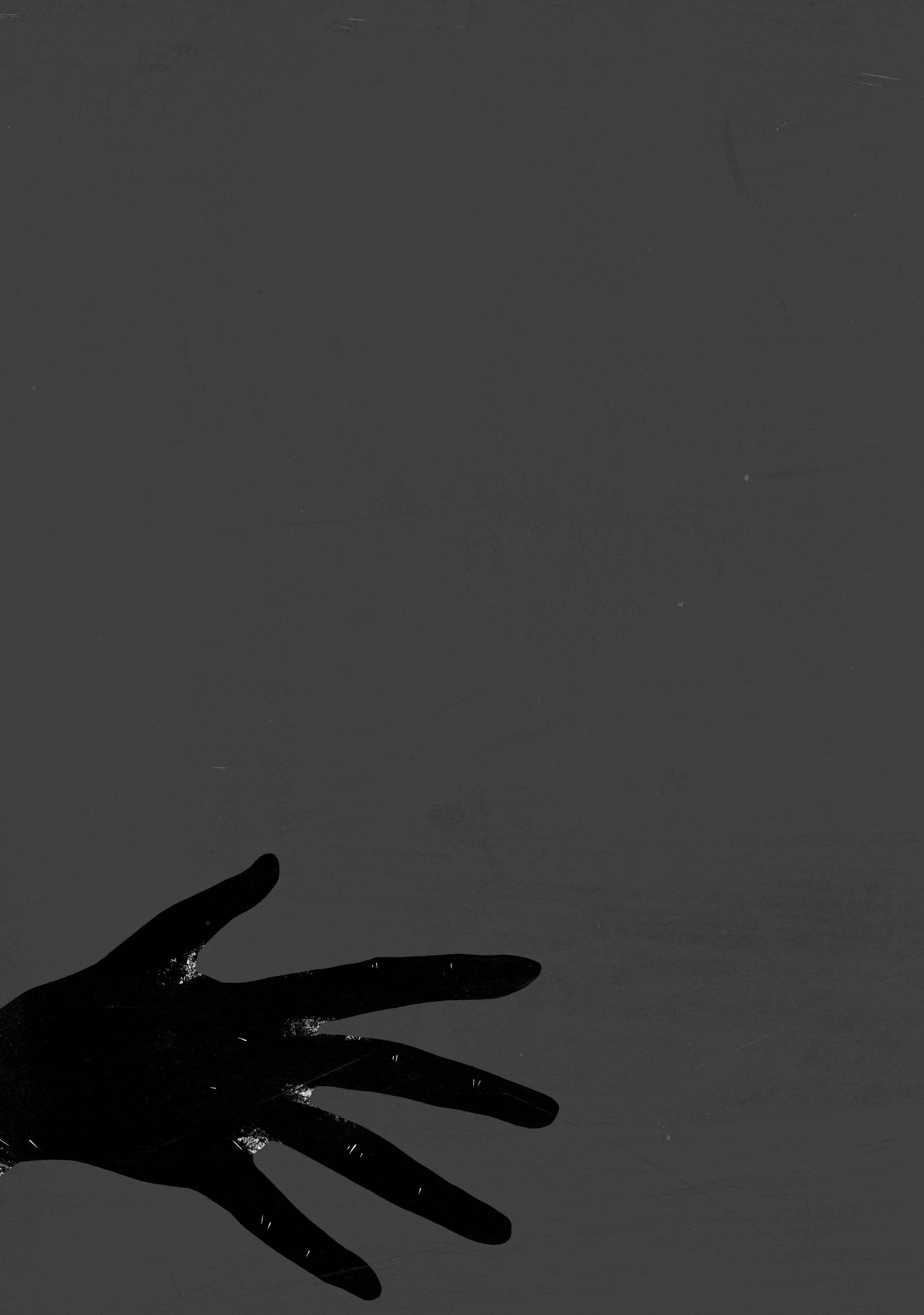
Some still long for a White Australia. They believe, just as the British majority did in 1901, that Australia’s national security depends on cultural homogeneity. They mistakenly think race, or ethnicity, or country of birth determines our physical and cultural traits. This implies a rejection of heterogeneity. Online, YouTubers and Redditors bemoan our modern cities as ethnic slums. In politics, Fraser Anning gives them a voice. In the real world, this strain of Australian thought births violence and abuse, from the 2005 Cronulla Riots to the contemporary attacks on Chinese Australians. This racialised view persists in a minority, despite its moral and logical failings.
Most Australians reject this explicit racism. However, many of us still want to achieve some amount of cultural homogeneity. Homogeneity demands that immigrants assimilate and conform to Australian culture. In the 1950s, this meant becoming a blank slate and imitating British Australia in every aspect. Eating the food and observing the festivals of other cultures is now acceptable, but immigrants still face pressure to hide their religion and change their cultural practice from across the political spectrum. Progressive (white) friends of mine believe the government should prevent immigrants from practising arranged marriage because it’s coercive for women. Not everyone translates their assimilationist views into immigration policy, but 2018 polling found almost half of all Australians wanted to ban Muslim immigration and a majority thought immigration was too high.
Our (white) political leaders give these fears a voice. Prime Ministers John Howard and Tony Abbott targeted asylum seekers and refugee immigration. Scott Morrison argued in 2011 that Muslim immigrants couldn’t integrate into Australian culture. “Muslim” and “refugee” are deracialised terms, but they still represent a fear of the “other” ...often of non-European origin.
24.
Is that so surprising? Australia may now be the most culturally diverse it ever has been, but it’s still incredibly white. Look at our media, our boardrooms, and our bus stops. Every time I venture beyond the cities, I feel like my skin gets a few shades darker. Humans want to be like everyone else. Inversely, they want everyone else to be like them. When a country’s state-legitimised national identity was based on a race-culture nexus for 70 years, it’s no shock that this basic desire produces demands for racial or cultural assimilation. The need for homogeneity implies a rejection of diversity, which gives rise to xenophobic tendencies in national debate. We clamour for restricted immigration and demand that culturally diverse Australians leave their heritage at the door. Our political leaders certainly can be blamed for weaponising this fear - but their campaigns could not succeed without a genuinely-held public belief that immigration constitutes a threat.
Yet we know this xenophobia is wrong, and we are ashamed that our beliefs veer so close to it. We are ashamed to lock refugees in detention. We claim to despise the racists and centre blame on them, as Raida Chowdhury writes elsewhere in these pages. We treat individual incidents as scandals to direct attention away from our fundamental assimilationist and xenophobic beliefs. The White Australia Policy is a scandal to modern Australia, and we reject it as a beast from an evil past.

We don’t talk about the White Australia Policy because to do so would invite comparison between our current society and the racialised Australia we claim we’ve consigned to the past. We would recognise the continuities of our restricted immigration policy and xenophobic politics. We are afraid to confront our xenophobia head-on. Our politicians praise multiculturalism with one hand while voting for boat turnbacks with the other. It’s doublespeak. It’s a lie we’d rather hide from.
We are forgetting the White Australia Policy. Few Australians faced the Policy while it was in operation, and their numbers decline each year. Our public figures are stuck in a populist bind and won’t confront the Policy’s legacy. By keeping the Policy absent from public discussion and confused in public memory, we maintain the facade of perfect multiculturalism. Maybe, just maybe, as immigration continues and Australia’s diversity grows, our xenophobia will lessen. Maybe we will forget the prejudice and fear that even now pushes us to support harsh and spiteful immigration controls. The facade might yet become a reality by default.
But fear of the “other” transcends race and religion. I reckon we’ll always want to shut the door to the world in times of uncertainty. It’s what we did in 1901. It’s what we did in 2001. Even this year, opposition leader Peter Dutton proposed immigration restrictions to limit housing price growth. Our kneejerk tendency is to stop the “other” coming in.
We can be as ashamed of the White Australia Policy as we want, but we’ll probably never grapple with its continuity to the present. At least history students will have an interesting conundrum to write their essays about.
25.
Art by Jasmin Small
PwC: Neither Disappointed Nor Angry Alexander Lane
There’s no scandal like a tax scandal. From Shakira’s case in Spain to Jimmy Carr being caught out in Britain and, of course, the most famous of them all, Al Capone’s eventual downfall. The media loves the idea of someone not paying their dues – never mind the companies who never have. It’s another contradiction of capitalism, it insists that all these rich people have worked for their wealth, hence a few inevitably need to be sacrificed on the altar of greed so that the rest can go on paying less than they deserve to. In other words, when no wealthy person pays their fair share, a few are chosen to cull the flock and suggest that the other ones do.
Of course, the tax scandal of this year is that of PwC. Surprisingly, this one has little to do with PwC not paying its taxes, but rather helping others avoid theirs. Caught with its pants down and fingers in the proverbial cookie jar, the management consulting and auditing company has come under increased scrutiny and criticism because it used confidential information it had learnt around government tax reform to then advise people on how to avoid such reform. Some may call it biting the hand that feeds you, others may call it a normal Tuesday for the Big Four.
When management consultants first rose to power, their main work was streamlining companies and reducing costs, a quite polite way of saying finding ways to make people redundant. Or as Laleh Khalili terms them, “mercenaries of class warfare” for their role in expanding capital’s profits and allowing a greater extraction of value from labour. Now, we witness the process come full circle, with consulting companies often performing the core roles that companies and government departments cannot do because of the “streamlining” that consultancies suggested in the first place. Whether or not this vicious cycle is a conspiracy, or another instance of capitalism’s marvellous ability to find new, shitty, ways to make money, is unclear at this stage.

What has remained absolutely untouched in the discourse around the PwC scandal has been the work that consultants typically do. Khalili discusses how some of the biggest consultancy firms cut their teeth assisting in neocolonial projects across Africa. The Gupta family in South Africa famously extracted nearly £70 million from the corrupt African National Congress. However, they were assisted nearly the whole time by the Big Four who circled the state’s carcass like vultures. McKinsey is considered the best consulting company in the world, which at this point, is a bit like being told yours is the best napalm. To wit, it was put in charge of Puerto Rico’s bankruptcy recovery in 2016. The oldest member of the team on the ground was 31, and their marvellous solution was mass privatisations and repealing labour laws. In Britain, consultants led much of the pandemic response for the cheap, efficient, well-spent sum of £1 million a day. There are even consultants for consultants. One company, Infosys, paid another, Synergy 360, $16 million to consult with Coalition MP Stuart Roberts to help it win government contracts.
And so, while this one instance should be condemned, and PwC’s government contracts should be reneged, and we should all look at our shoes, ashamed-like blah blah blah, the whole affair is a bit like getting in a submersible with no regulatory approval and a PlayStation controller as a steering system…not much good is going to happen. The track record of consulting companies can be gleaned from their accounts, it’s just about finding more profits. And in capitalism, the law is always the last barrier to more money. In one form or another, PwC’s tax scandal was bound to happen.
26.
Labor has steadily pinned the blame on the Coalition, who froze the expansion of the public service but blew out on more costly consulting companies. And Labor is right, especially when we see the revolving door. A revolving door which they actively participate in as well, by the way. Former Labor minister Mark Arbib went on to work for Crown Casino, as did the ALP national secretary Karl Bitar. Meanwhile, former Liberal Defence minister Christoper Pyne went on to help Ernst & Young expand their defence contracts. Former Treasurer Josh Frydenberg, responsible for overseeing the finance sector, including large mergers, has gone on to work for Goldman Sachs, but it’s all okay because he came from Deutsche Bank before politics. It is clear that politicians like to use consultants as it becomes an easy way to secure work after a few years on the Hill.
However, consultants are but one part of the APS’ broader atrophy.
The idea of an independent civil service, there to give frank and fearless advice, is both no longer true and no longer wanted. One of the key learnings from the Robodebt scandal has been not the predictably poor-bashing behaviour of Liberal ministers, but the lack of pushback from the public servants involved. The Senate inquiry showed that the frank and fearless advice on the legality of the program was outsourced, and even then, it was ignored. Not just by the politicians involved, but by several rungs of the APS, from top brass to middle management.
If the APS cannot perform core operations, and cannot provide an independent check on policy, then it’s just some 150,000 people with above average superannuation. Yes, good is still done and I have much more admiration for the average public servant than the average consultant (although Defence and the Big Four may sit equal) but the fact remains that increasingly the public service exists to coordinate contracts, do the parts of the job where profits aren’t extractable, and steadily work itself out of existence.
The real test will not be changes to rules and regulations around consultants, but whether Labor invests enough in the public service to remove the need for pointless outsourcing. And here, the signs (by which I mean astrological interpretations) are not looking good. Rebuilding the APS requires a serious amount of money. Not only must it compensate for the work of the Big Four, but for the myriad of other consultancies who exist solely to work for the government. Such permanency and such a business structure show how bloated the industry is. Labor has made clear that spending money is categorically unconscionable to them because we simply must pay for those tax cuts that benefit (let me check my notes) the rich and coincidentally, politicians. Unless it’s for submarines. I hope those too use PlayStation controllers.
At the end of all this, we cannot be either disappointed or angry. Disappointment would suggest we expected more and anyone who expected more of a company built off making useless work seem worth millions is unfortunately not only holding the wrong end of a very shitty stick but is also a bit stupid. And you can only be angry when you are embarrassed and ashamed and scared, and when we enabled and in fact supported what PwC became, we don’t have the right to any of those three reactions.
Instead, I suggest we look faintly bemused as our money is wasted and attempt the cool serenity of the witless while we pivot radically to Chat GPT, which I’ve been assured is just as good as a consultant and needs far less cocaine.
Author’s recommendations:
Books: The Big Con by Mariana Mazzucato and Rosie Collington
Podcast: LRB Podcasts ‘What Do Management Consultants Do?’
Jobs: I hear Lockheed Martin is hiring.

27.
Art by George Hogg
Books and Bombs: On Ted Kaczynski’s Philosophy William Smith
Content Warning: Terrorism
Dubbed the ‘Unabomber’, Kaczynski ran a 17-year-long mailbombing campaign across the continental United States that left three dead and 23 wounded, and ended with his capture in an isolated log cabin nestled amongst the towering, evergreen pines of rural Montana. His reign of violence and terror not only inflicted vicious, physical wounds on his victims, but rattled a nation’s conscience and profited off its anguish.
The key to unmasking the Unabomber’s identity was not through the usual missteps of a serial criminal – doubtful words said to a friend at a bar, straightforward errors in executing his crime. Instead, the answer was etched in Kaczynski’s 35,000-word manifesto, reluctantly published by the FBI in a last-ditch appeal to the American public to identify the linguistic fingerprint of its author. Distributed as a supplement to a September 1995 issue of The Washington Post, the tract, entitled ‘Industrial Society and Its Future’, was placed in the hands of people across the nation. Each was deputised as an agent in a cross-continental project to identify a serial bomber. To this day, Kaczynski’s writing provides the most insightful account of his philosophy – what drove a man to apoplexy and violence.
The idiosyncratic words and tone used throughout the manifesto painted a picture of the writer as well-educated, pedantic and from the northeastern United States, clues which ultimately led to his identification and capture. But they also sketched an image of modern society’s technological system, as seen through the eyes of Kaczynski: a veritable Leviathan that manipulates the lives of its inhabitants and controls their every breath. In the 232-paragraph long tract, Kaczynski rambles about what he sees as the blight of modern leftism, theories of humanity’s historical arc and psychology, and the French and Russian revolutions. However its focus is, for its author and reader, also its most salient subject: freedom.

Kaczynski argues that the defining feature of modern life is the technological system we inhabit: phones, televisions, planes and manifold other devices and social arrangements which alter existence and take us further from nature. Freedom, which he considers to be the essential good of human life, is fundamentally at odds with this system. In his view, technology doesn’t improve our autonomy, but rather limits our choices and forces us to alter our behaviour. For instance, while cars do indeed let us travel places more quickly, we have adapted our principles of city design to a point where you cannot traverse our motorway-riddled cities without one.
This is not the form of freedom championed by modern free-market libertarians, the chief advocates of small government. For Kaczynski, it isn’t merely the government that restricts our autonomy, but the entire economic and technological system. He holds that the only way to address this subjugation would be to throw out one’s phone and television and with them the entire system. For him, while a life in the Great Plains wilderness would be gruelling, it would be more fulfilling and more free than being an automaton in modern society. This is the revolution Kaczynski’s campaign of violence wished to precipitate, to continue until all of our infrastructure was razed, our technical manuals burned down, and we had retreated into the lives of our pre-agricultural ancestors.
28.
But Kaczynski was mistaken about our society’s technological system. It is this exact system that allows us to be free.
Our economic system of production and consumption has emancipated a vast portion of humanity from the most visceral and demanding material concerns that blighted our past lives. For most of society, it affords limited comforts – shelter and a full stomach – which alone protect us from the need to fend off a bear for our survival, or to hunt for our next meal. There are most certainly liberties we must abdicate for this privilege, like time spent at a job or travelling to work. But this means that our central concern, all day and night, is no longer that of our own survival. Instead, we can allocate time to cultivating other faculties through intellectual pursuits, or watching our favourite movie, or spending time enjoying the company of our family and friends.
This fact is overlooked in the modern locus of Kaczynski’s political legacy, a Tik Tok community of creators and activists who champion the accomplishments of “Uncle Ted”. The half-serious ravings of #tedpilled insiders are only possible in a world of material comfort, where we have overcome the physical isolation and mental exhaustion that prohibits intellectual exchange.
Moreover, the technological system keeps more people alive, and for longer, than at any time in human history. The scientific industry has developed medicines and cures for even Mother Nature’s most debilitating diseases. Children that would otherwise have died in infancy due to inadequate sanitation or a lack of medical treatment now live longer, healthier lives than they would without the industrial project. This is more time spent with family, reading, falling in love, and experiencing the indelible quality of being human. More time spent being free.
Inequality is certainly baked into this system, with people in the Global South and in our own country still subjected to gross atrocities. But these are issues that have vastly improved under the industrial system. The World Bank estimates that global poverty has fallen from 80 per cent in 1800 to below 20 per cent today. And there is reason to be hopeful that this figure will continue to fall into the future. Technology provides a powerful mechanism by which we humans can protect ourselves from our most powerful enemies: famine, disease and mortality.
It is definitely the case that people are controlled by machines in ways that are regrettable. Further, the industrial system has been forced onto Indigenous peoples under the guise of “civilisation” in ways that are grossly deplorable. When reflecting on how these problems should be addressed, the role technology plays in their continuation must be reckoned with. However, Kaczynski was wrong to say that industrial society denies freedom. In many important ways, it does the opposite.
This explains why, despite the manifesto’s wide circulation in the late 1990s, its intellectual penetration was limited. Most readers, safely ensconced in the system Kaczynski derides, dismissed the work as that of a crazed zealot. Most imbibed its radical thesis not as a rare piece of literary brilliance, but as a paean to their own normality –in contrast to their author, a serial murderer.

Kaczynski’s campaign of violence was deeply wrong. But the philosophy that motivated it was wrong as well. Both are scandals of the life of one of last century’s most profoundly disturbed men.
by George Hogg
29. Art

30.
Art by Amanda Lim
Content Warning for next page: Drugs, Nudity, Death, Animal Cruelty and Woroni Shenanigans
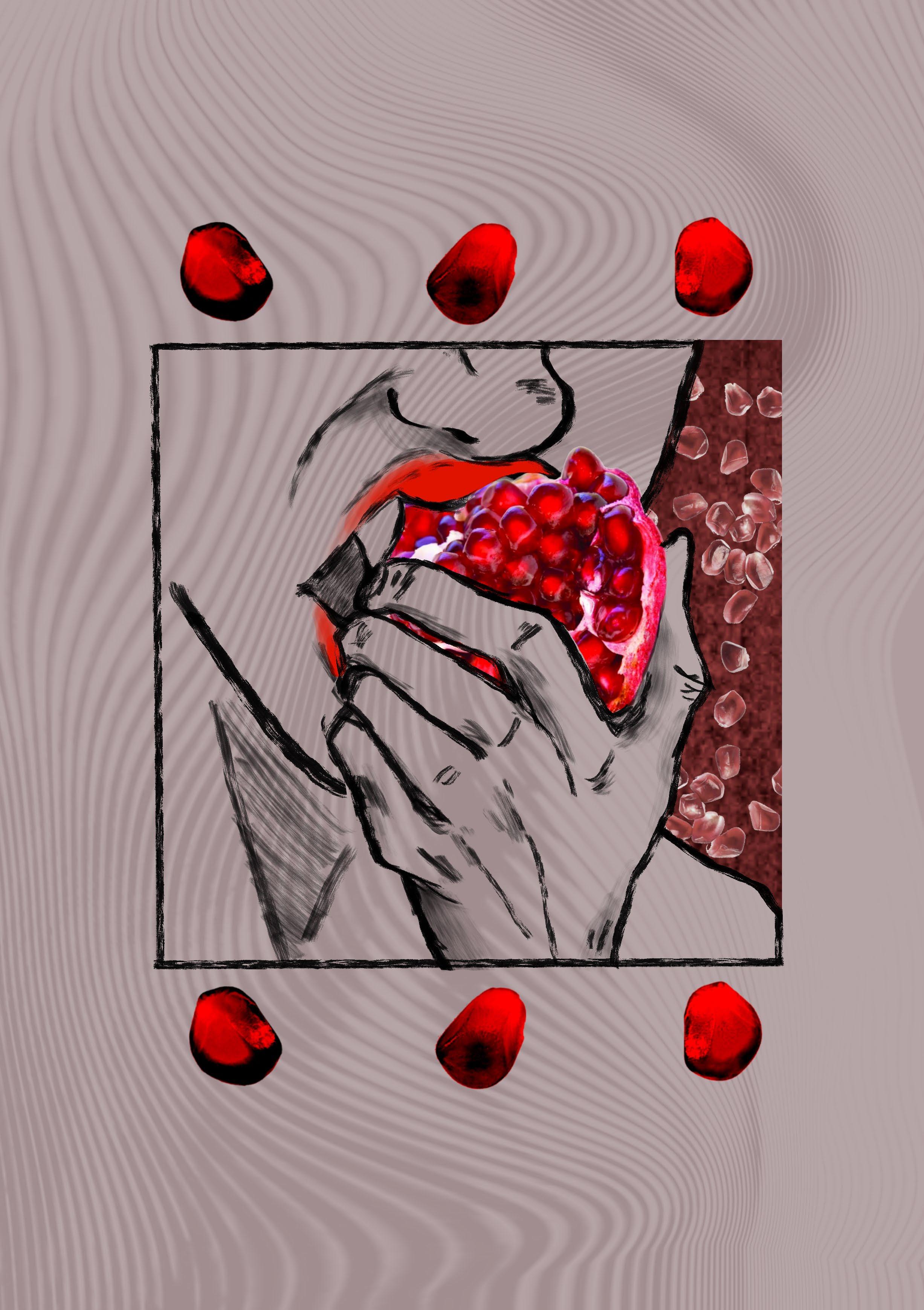
31.
Art
by Amanda Lim
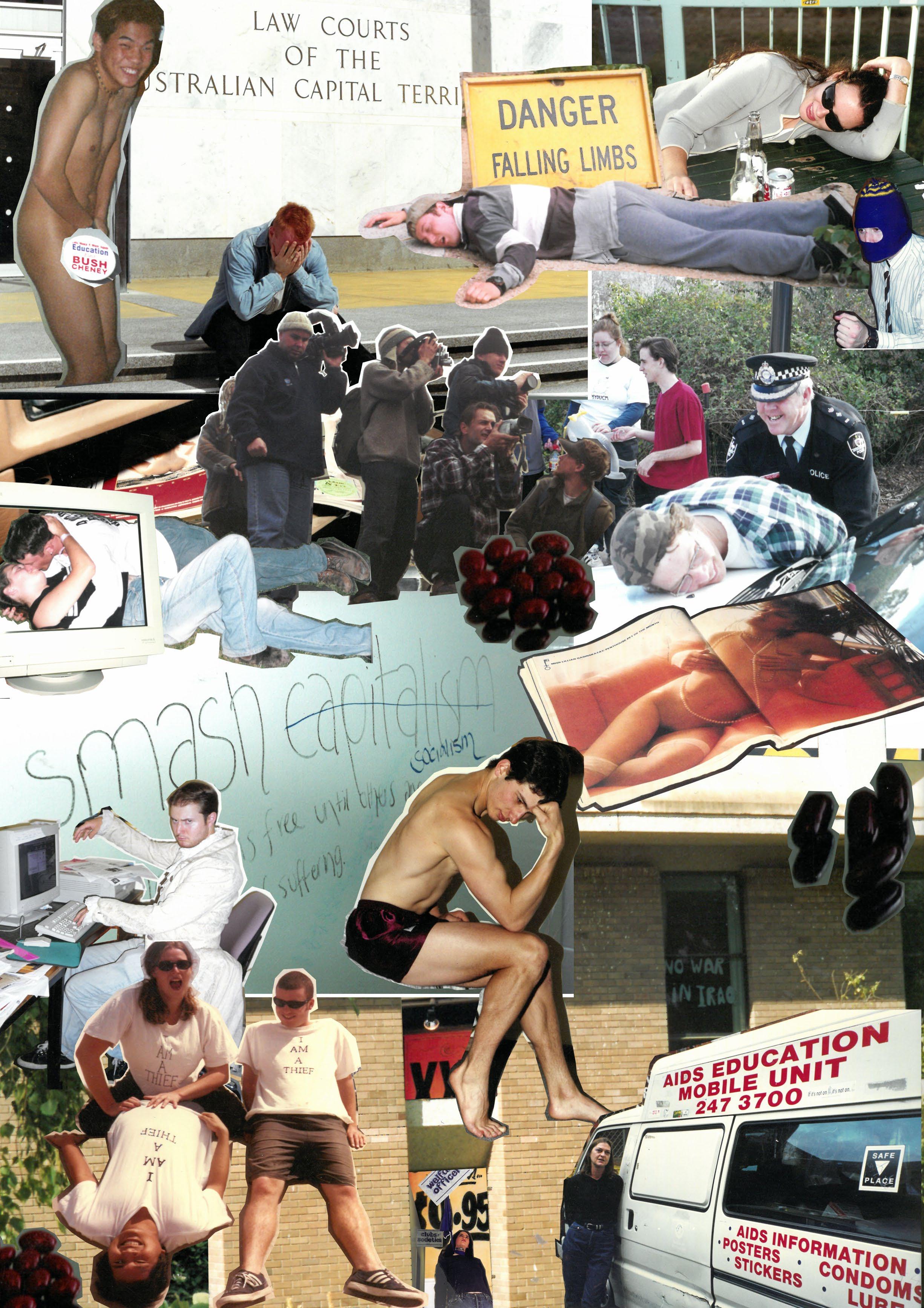
Art
32.
by George
Hogg
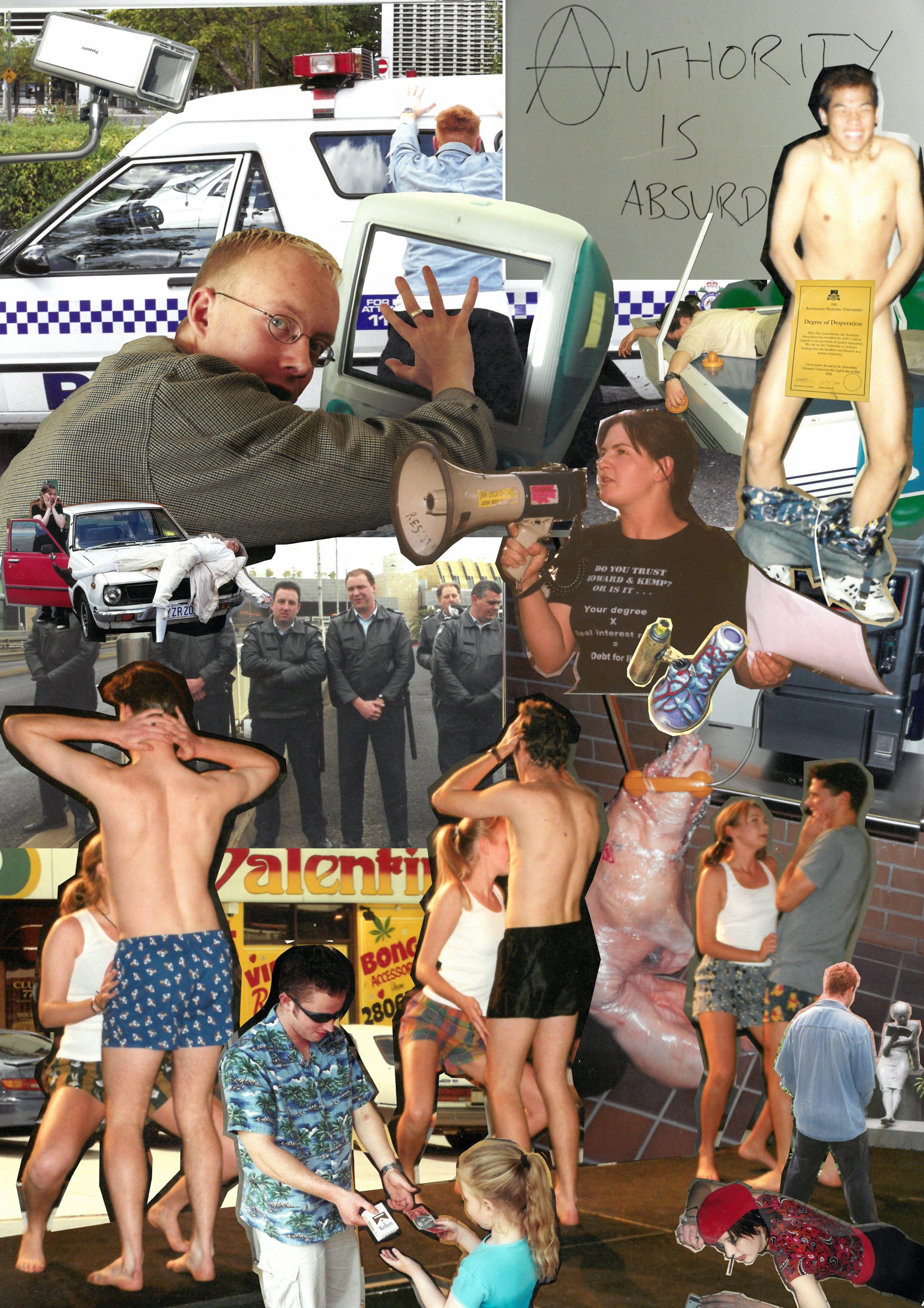 33.
Photos from the Woroni Archive
Art by Cynthi Weng
33.
Photos from the Woroni Archive
Art by Cynthi Weng
The Price Aala Cheema
FADE IN:
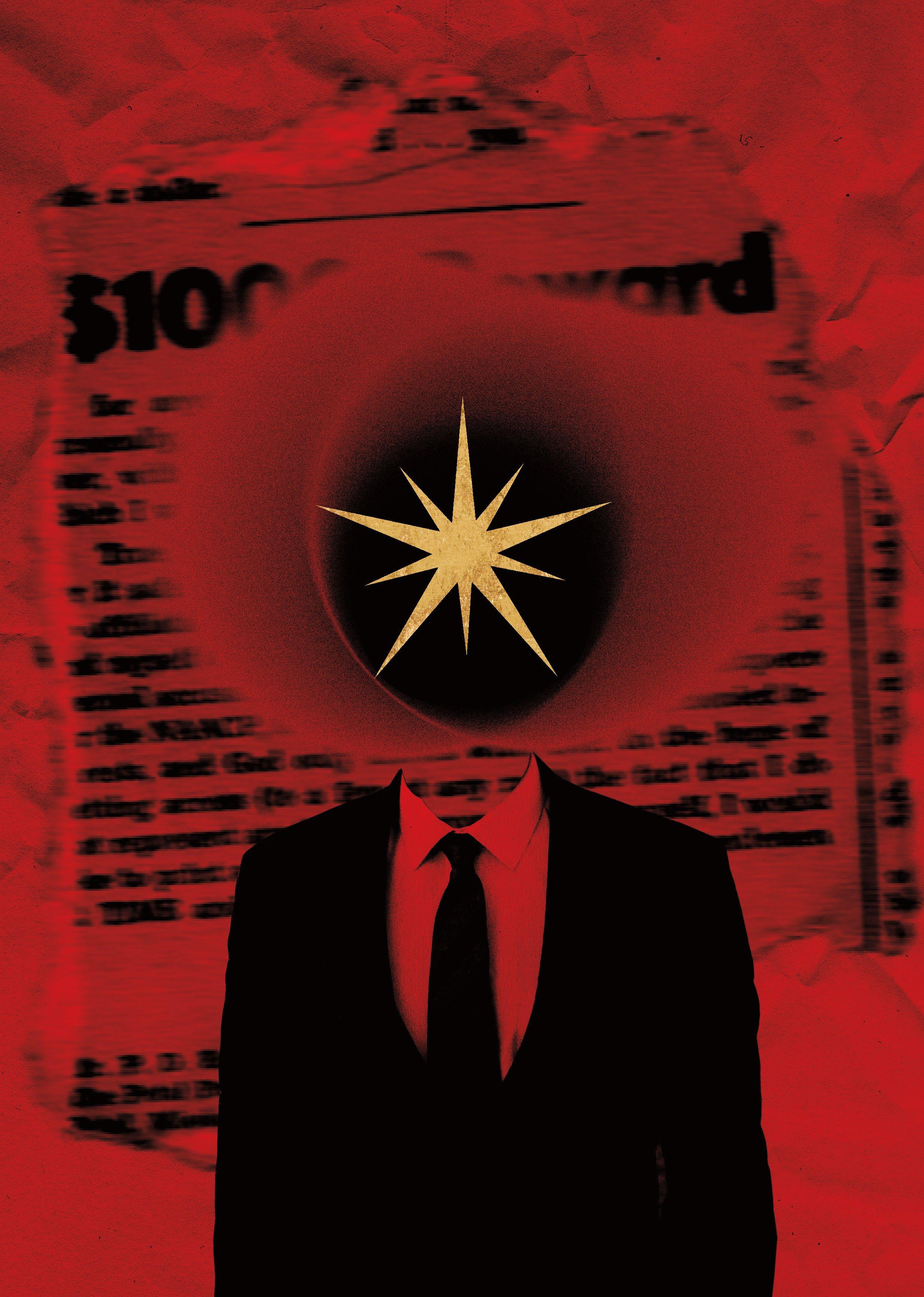
EXT. AULIS - DAWN
The Mycenaean armada, consisting of 1000 ships, is moored on the port town of Aulis. The white sails of the oared galleys droop in the windless bay. The water, too, is still and unmoving.
As the sun rises, soldiers emerge from the tented camp. They assemble on the rocky field, before a dais, wearing their armour: bronze cuirasses, shoulder guards, arm plates, greaves, and boar tusk helmets. They clutch their spears and circular shields as they wait expectantly.
On the dais, AGAMEMNON stands beside his brother, MENELAUS,and the seer, CALCHAS.
AGAMEMNON (to CALCHAS)
Are you certain this is necessary?
CALCHAS
My king, the goddess Artemis demands this. You killed her sacred stag. We must appease her anger. A sacrifice is required.
MENELAUS
Brother, the soldiers are restless marooned here. We promised bloodshed and glory. If we are to reach Troy, we need wind.
AGAMEMNON nods. He shifts uncomfortably on the dais, as his daughter IPHIGENIA and his wife CLYTEMNESTRA emerge from the camp.
IPHIGENIA is dressed in a white chiton decorated with hundreds of gold sequins. The flounced skirt brushes against the dusty ground as she walks. Blue pins adorn her hair, as long black curls snake down her back. A beaded gold necklace rests against the white skin of her chest.
CLYTEMNESTRA (whispers) Where is Achilles?
CLYTEMNESTRA scans the field, but the legendary warrior is nowhere in sight.
34.
CLYTEMNESTRA (CONT’D)
Why would he not be here...
IPHIGENIA
Do not fret mother. Achilles cannot miss his own wedding. I am sure he is here somewhere.
CLYTEMNESTRA and IPHIGENIA reach the dais. A SOLDIER emerges from behind them and grabs CLYTEMNESTRA.
CLYTEMNESTRA (shouts)
What are you doing? Let me go!
CLYTEMNESTRA clutches at her daughter’s arm, but the SOLDIER pulls her away.
CLYTEMNESTRA (CONT’D) (shouts)
No! No! No! Iphigenia! You cannot do this. Iphigenia!
IPHIGENIA looks at her mother, confused. AGAMEMNON steps forward and grabs her hand. He pulls her onto the dais. They stand before the field of soldiers. CLYTEMNESTRA continues screaming for her daughter.
IPHIGENIA Father, what is happening?
AGAMEMNON
Do not worry. Iphigenia, we are the blood of the noble house of Atreus. At times, we must make sacrifices to perform our duty.
CLYTEMNESTRA (CONT’D) (struggles against the soldier’s grasp)
We have to leave. Iphigenia! Let me go!
CLYTEMNESTRA (CONT’D) (shouts)
Run! Iphigenia, please, run!
IPHIGENIA (smiles innocently)
That is why I must marry Achilles. You do not need to explain it to me. I will not disappoint you father.
AGAMEMNON
I know you will not.
CLYTEMNESTRA
No, please! Not my daughter!
35.
Art by Cynthia Weng
AGAMEMNON unsheathes his dagger. Swiftly, he slices it across IPHIGENIA’s throat. Blood spills across the dais. It trickles down the steps and towards CLYTEMNESTRA.
CLYTEMNESTRA (CONT’D) (screams)
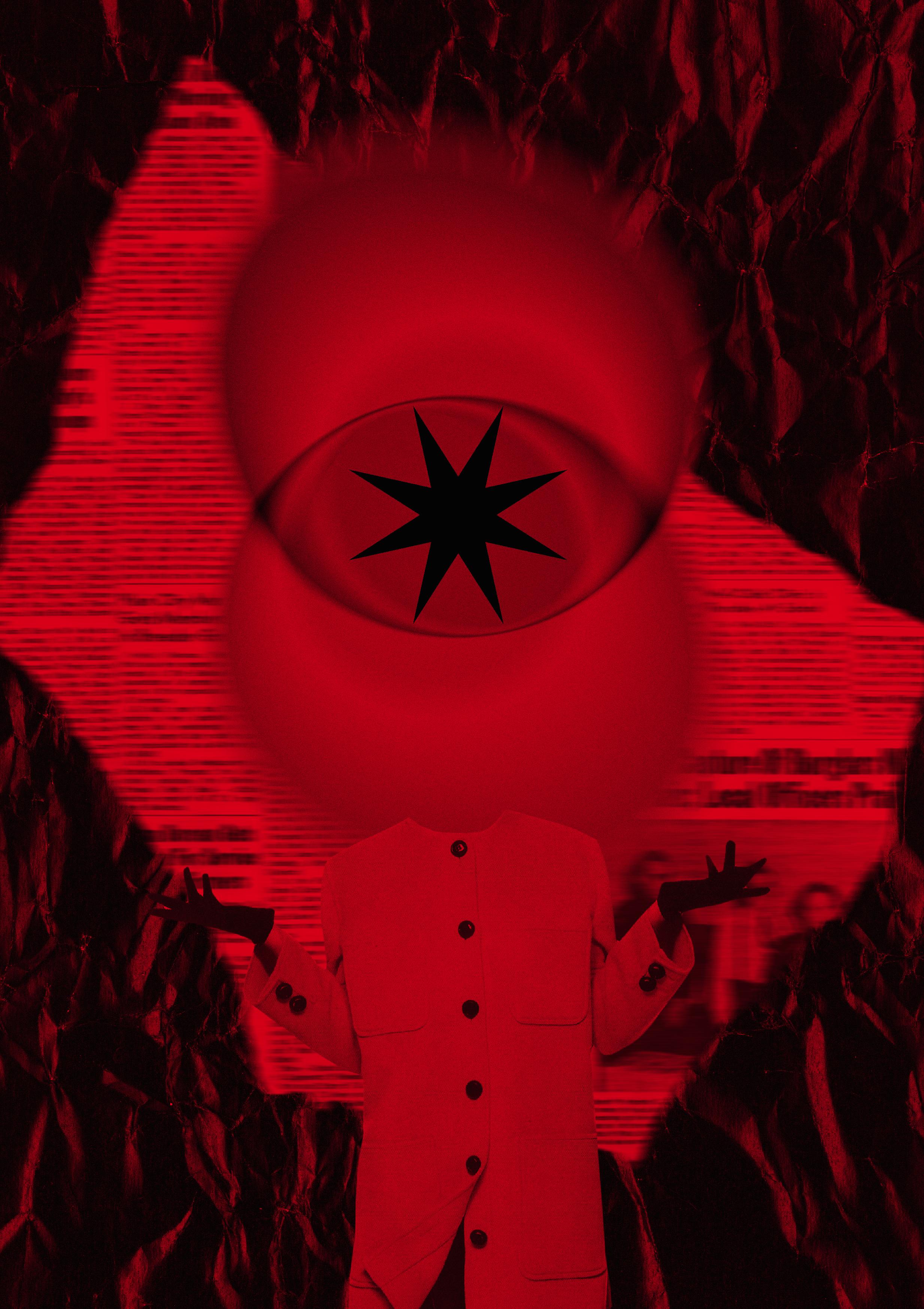
My daughter, my daughter!
Iphigenia!
AGAMEMNON lays IPHIGENIA’s body on the ground and steps backwards.
AGAMEMNON (addressing the army) We will leave on the morrow.
The SOLDIER releases CLYTEMNESTRA. She races towards her daughter and cradles her body. She rocks back and forth, her deranged cries reverberating through the clearing. Slick, hot blood covers her hands and stains IPHIGENIA’s white dress.
The lifeless eyes of IPHIGENIA stare up at the sky. CLYTEMNESTRA’s hair flies across her face. As she tucks it behind her ear, her sobs stop suddenly. All is quiet. The soldiers have dispersed. It is only she and IPHIGENIA on the dais. Then, the trees rustle.
CLYTEMNESTRA looks up at the sky. A strong gust traverses through the field. By the bay, the masts of the armada blow in the wind.
CLYTEMNESTRA’s teary eyes harden with malice. FADE OUT.
Artist’s Statement:
This screenplay is inspired by Greek Mythology.
After Helen of Sparta flees to Troy with the Trojan prince Paris, her husband Menelaus and his brother Agamemnon gather their armies to retrieve her However, their journey to Troy is stalled by poor wind Agamemnon sacrifices his daughter, Iphigenia, to appease the goddess Artemis While he inevitably wins the Trojan War, once he returns to Mycenae, his wife murders him to avenge her daughter’s death
Clytemnestra is my favourite character from Greek mythology She embodies the ferocity of maternal love as well as female rage This screenplay adapts the section of the legend that ignites her desire for vengeance against her husband
36.
THE END

37.
Art by Jasmin Small

38.
Art by Jasmin Small
These Feminine Wiles Anonymous
With these feminine wiles I will use men to get what I want
I will laugh when jokes aren’t funny Especially when jokes aren’t funny
I will wear long skirts, so that imaginations must be put to work. But see also the softness of my chest, a reassuring presence, so that imaginations must not work too hard
Nothing must be too hard I must not be too hard, indeed, to him I offer my softness, as respite
I am duplicitous (I dare not fool myself With the romantic pretence Of Walt’s multitudes)
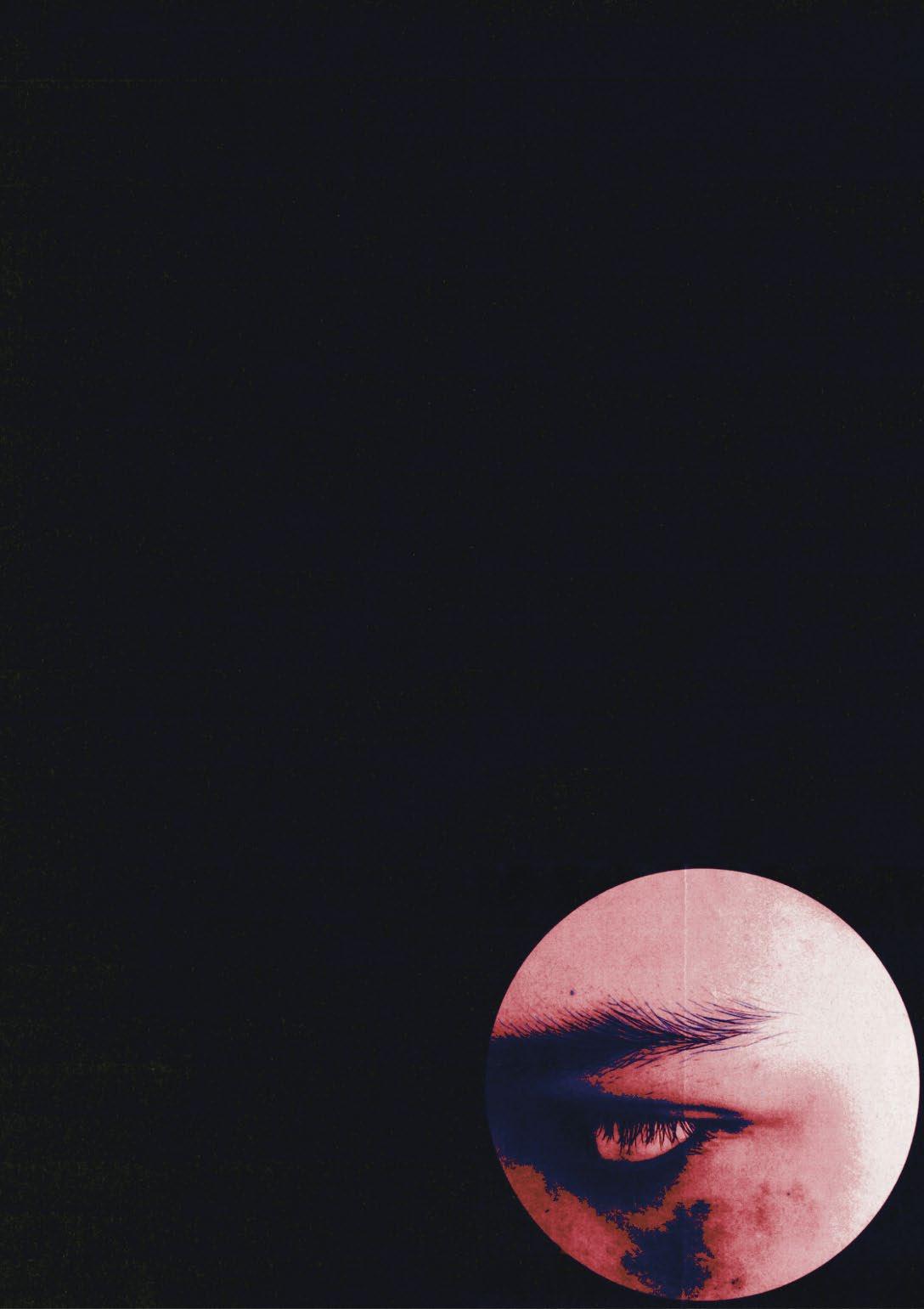
I do not talk of the one who has my heart, the only one to whom I wish to reveal myself, fully
Instead, when I am pulled close and I know the time has come, when I am invited to fulfil my promise with these feminine wiles I will not refuse him.
I will entertain him. That I have no intention of opening myself to him, fully, he must not know Indeed, to him I offer my consolation
A kiss, on the cheek, serves only to say oh not right now- it is not the time, wait for me, continue to be kind to me, I will reward you
Later, when I speak to the one who has my heart
I tell him of the kiss on the cheek. Of my reluctance, of my shame, that much is true But what I do not tell him is that the kiss was mine
The kiss belonged to these feminine wiles and I offered it to him
To get what I want But what that is I have never told anyone, that for which I use and will continue to use these feminine wiles:
Something akin to ease. Something akin to security
Something akin to peace
Art by Jasmin Small
39.
Illicit Affairs
A short story based on the Folklore teenage love triangle by Taylor Swift.
Isabella Stewart
James
I thought she knew me. She should’ve known that I would hate this entire scene. My palms are sweating, and the overcrowded room makes me squirm.
No matter how many times I try to loosen my tie I still feel as though I’m suffocating. I try to look for Betty to tell her I’m going out for some air, but I can’t see her. I head out anyway, I won’t be long, and she’s probably busy with her friends anyway.
Feeling a little calmer after clearing my head outside, I go back in. As I’m walking towards the door I can hear her favourite song playing, and a smile comes over my face as I think about how happy she must be. I prepare to sweep her off her feet and twirl her around the dancefloor. I walk through the door and scan the room. But she’s already dancing. Just not with me. She’s with him.
As a gaping hole starts forming in my chest, the walls start closing in. I manage to stumble back to the door, high-tailing it out of there.
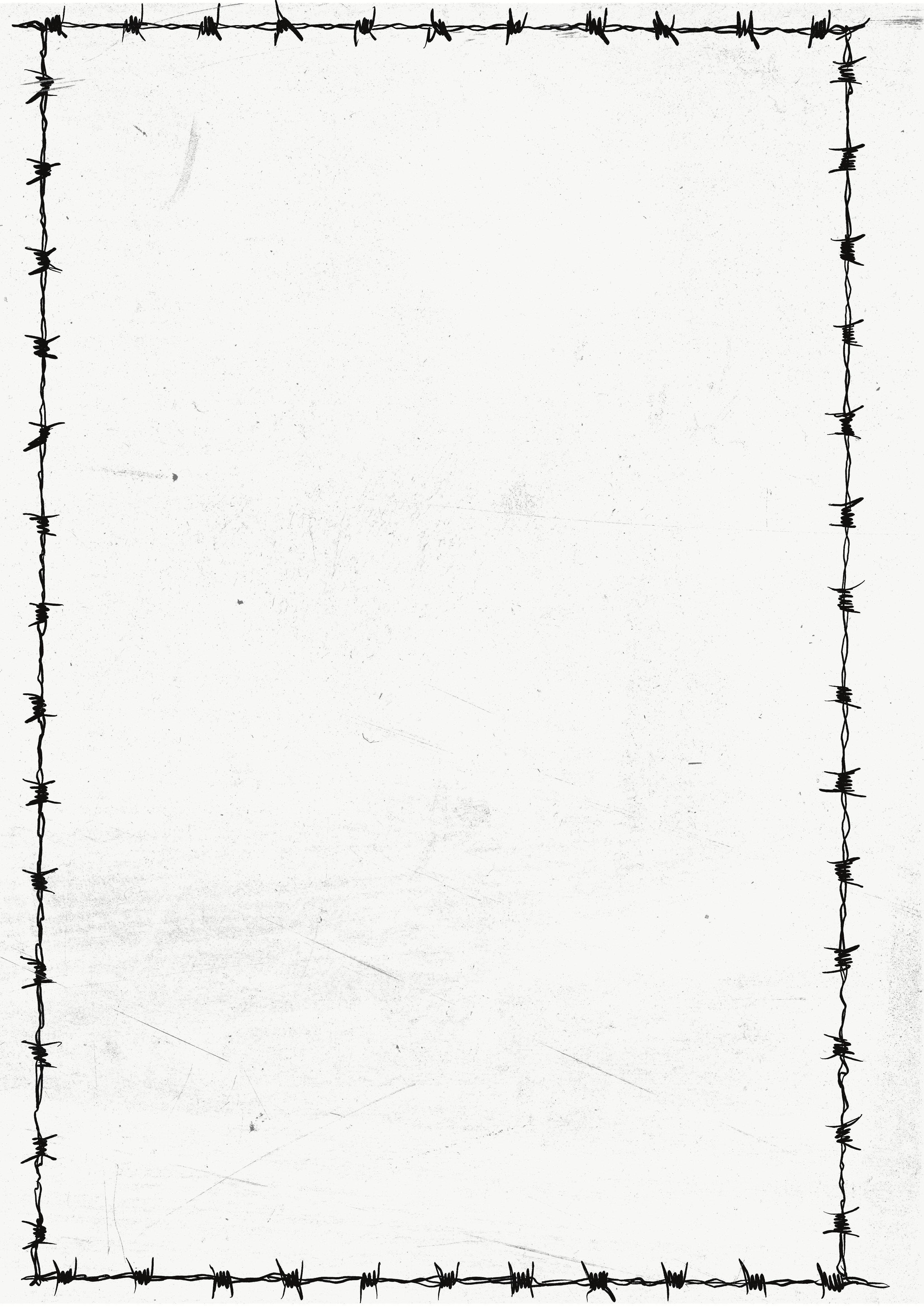
I walk through the rain on a broken cobblestone street, suddenly hearing a car start to slow down next to me.
“James?”
Augustine “James?” I ask.
Recalling the way Betty was giggling with excitement about going to the dance with him, I furrow my brow in confusion that James was here.
“James, get in, let’s drive.” He stops and sees me, hesitating before opening the door and jumping in. I take in his drenched tuxedo and downturned mouth.
“Are you alright?”
He sighs, “No. Look, I don’t really feel like talking about it. Can we just…go somewhere?”
40.
Art by Jasmin Small
“Yeah. Um, how about the beach?” I ask. He nods and we drive in silence for a while.
“So. How was the dance?”
He snorts, “It sucked. Super lame. Why didn’t you go?”.
I chuckle, give him a cheeky grin and jokingly say, “Cause I think they’re pretty lame too.”
He snorts again, giving me that adorable smile of his for the first time. The corners of his mouth curve up towards his eyes, making them twinkle, and those dimples that appear on his cheeks make what feels like a rollercoaster appear in my stomach.
“Honestly,” I sigh, “My mom just lost her job. I’ve had to pick up some extra shifts to help out, so I had to work tonight.”
He looks at me with concern and sympathy, “I’m sorry you have to go through that. If you ever need anything you know I’m here for you, right?”
I give him a soft smile at his compassion, he’s always been willing to help the people he cares about. “Thanks. And you know I’m here for you too right? You can talk to me about anything.” I say, trying my best to subtly see what’s going on with him.
It doesn’t work. He just nods silently, and starts talking about anything else: his skateboarding, my annoying chemistry teacher, his ratbag of a brother that stole his comic book, my latest cooking failure that ended up with flour exploding in my face, which he says he thinks is adorable. We spend the rest of the drive talking and laughing. I’m more than happy to oblige in his distraction. Talking with him is easy.
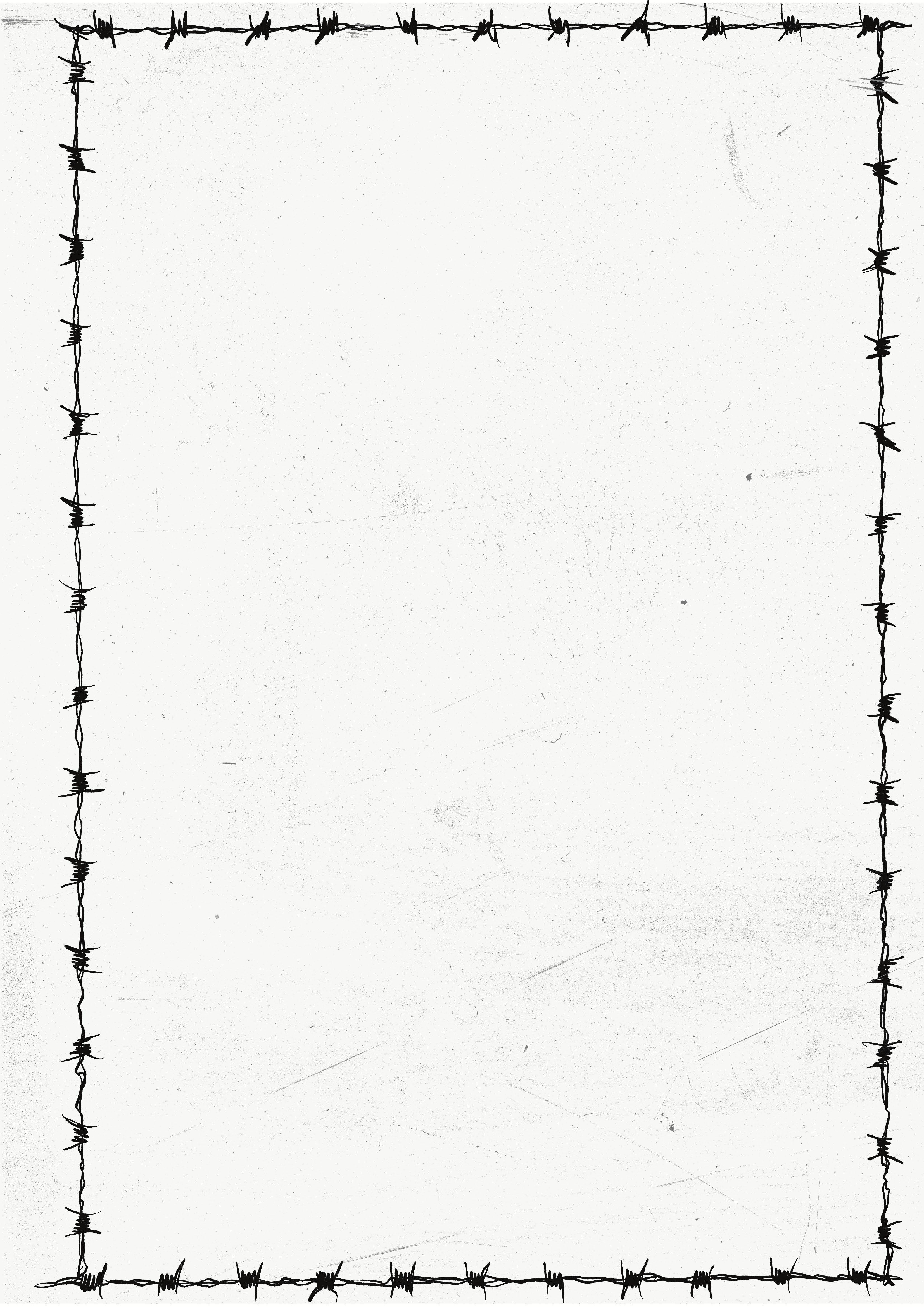
We finally get to the beach. We don’t say anything for a while. James is just staring out at the water, looking pensive. “Do you want to talk about it now?” I ask in a quiet voice.
He takes a deep breath in, steeling himself before blurting out, “Betty left me for some other guy at the dance.”
I choke on air. Wracking my brain for something to say. “I can’t believe that. Betty would never–”
“Well she did,” he snapped. He shuts his eyes tight for a second, then looks at me sincerely. “Look, I’m sorry. You’ve been more help than you could ever imagine. Talking with you just seems easy. Like I can forget about everything else.”
41.
We share a smile. I open the glove compartment and pull out a bottle of wine. Uncorking it and taking a swig before passing it to him, I say “Seems like the situation calls for this.”
He laughs sardonically before taking it.
I wake the next morning with the taste of salt air in my mouth, and sun streaming through my car window. Looking at the body curled up next to me, flashes of last night play through my mind. Whispers of him asking “Are you sure?”, and my voice trembling with both nervousness and excitement as I reply, “Never have I ever before,” then him kissing me, sending every nerve fibre in my body alight with fireworks.

His back is now bathed in sunlight, and I trace my name across it, wishing and hoping that after last night I can finally claim him as mine.
We say nothing as we get dressed and I drive him back home. Before he gets out he gives me one last kiss, saying “Meet me behind the mall later.”
That was the start of the best and worst summer of my life. Betty
Inez comes running up to me as I’m looking out for James. I haven’t seen or heard from him since the dance and I was starting to get concerned.
“Oh my God are you alright?” Inez asks - her eyes wide with a combination of worry and some sick form of excitement. I’ve seen that look before - she’s got something juicy. She’s practically salivating at the prospect of spreading the latest scandal.
I look at her confused. “What do you mean? Hey, by the way, have you seen James? I’ve been trying to talk to him and–”
Before I can finish she gasps and says, “Oh my God, you don’t know?”
“Know what?” I ask, suspicion leaking into my voice.
“Look I didn’t want to be the one to tell you this,” I roll my eyes, “but James cheated on you last night.”
“Wait. What?”
I shake my head, my thoughts swirling like a crazed storm. I know he seemed off last night, but I loved him all the more for putting up with it all just to make me happy. I didn’t think that he hated me so much for dragging him to the dance that he would find someone else. He wouldn’t do that. She had to be lying.
42.
“What on earth are you talking about? How could you something like that?” I told Inez, my voice getting louder as I get more and more upset
“Betty, a lot of people saw him get into a car with Augustine after he ditched you at the dance. Then this morning I was walking to school and I saw her dropping him home and he was still wearing his tux ”
“So? They’re friends. She was probably just giving him a ride. That doesn’t mean - “
“I saw him kiss her.”
That stops me. Was Inez telling the truth? Most times you can’t believe a word she says, but this time she speaks with such conviction and her eyes seem so genuine, that it almost makes me believe her
“I’ve gotta go ”
I leave Inez and race through the hallways, frantically searching for him It can’t be true I notice some people avoiding my eyeline, and some just openly looking at me with pity

I finally find him He stops walking as he spots me coming, just staring at me with a mix of anger and sadness, the truth of what he did written across his face In that moment I can’t deny it anymore, Inez was telling the truth
With my eyes starting to water, I wait for him to say something, anything that will make this all go away But he doesn’t, he just stares back at me with a hurt so raw it bleeds into anger
As I turn around and leave him, I can’t help but feel that I’ll never really get over him, that he’ll linger like a tattoo kiss But ultimately, I wasn’t surprised that when he was done with her, he showed up standing in his Levi’s on my front porch In
43.

Art by
44.
Vera Tan
Art by Cynthia Weng
Untitled Kaz Marsden
I gazed into the eyes of Evil and kissed her –A matrimony in Boston Wed beneath the sky’s pearl, Her lace interwoven into my Suit, white rose boutonniere, To vow on Plato’s tenth muse
Absent from the makers’ eyes –Ignorance forbade their judgement, So we sipped liquid rubies, Rejected their gifted names, Rebirthed Virtue, I endorsed, yet –We swallowed cursed fruit All-knowing, bleeding truth
Staining all white a cardinal, I choked on seeds with Virtue and veiled her –The makers’ eyes confronted me Tongues berated, a bayonet, Three Kings howled a tempest So I retched my spite –Our skins sprouted serpent scales While black slits catered to My two reddest whites –Beneath lace, my Virtue bestows a labrys, matches, manuka, Their wood smokes, I set forth To torch wood giants red, We cradle candles so close Their crosses burn black, and She wails; I hear that, mother –Yet in care I am Dead.

45.
by George Hogg
Queer Qupid Dating Nightmares and Dating Advice
Dating Nightmares
Readers submitted their worst dating nightmares and sought advice from our Queer Qupid, read at your own risk. Content Warning: cringe ahead

We’d been talking online for a few weeks and were soon to get a few drinks and dinner at Akiba. The date is going fine until I mention my last name. She freezes and her jaw hits the floor. She had just met my dad a few days prior. As it turns out, our parents had both recently



On my first ever proper date the guy I was with threw up after kissing me. Not directly after but like three mins after. It was apparently because of a
In first year, I went on dates with a girl from my college. Around 3 months in to dating her, I asked her to be my GF. She didn’t seem surprised when I asked and said yes to becoming official. After becoming official she was just as affectionate towards me, so I was thrown off by her next move. The following day she sent me a text breaking up with me and never spoke to me again.
He finished while going down on me for 2 minutes very awkies.
Dating advice
Tips for getting over someone? Me and this person have had an off/on thing for the past few years, and I feel like I’m only a rebound/fun option for when she isn’t in a relationship. It hurts my confidence, and I want to go back to just being friends, but this pesky “crush” still remains. Help?
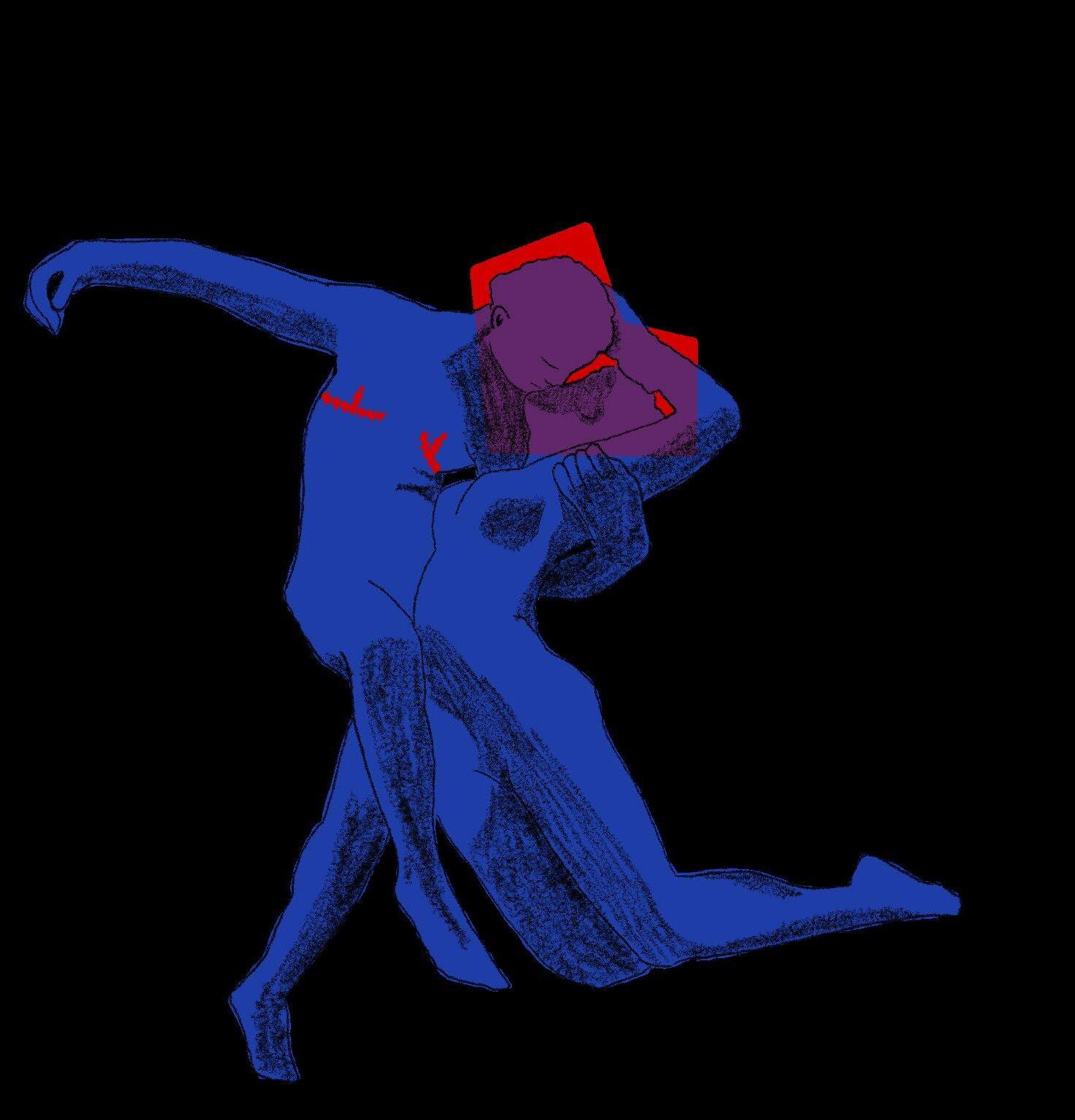
Getting over someone, particularly someone that you still have to spend a lot of time around, can be really challenging. From the sounds of it you have had a really complicated relationship with this person, one that’s had a lot of leftover baggage. My best advice would be to take a step back and a breather from this relationship. It doesn’t have to be forever and you absolutely can still maintain a friendship with this person eventually but taking a few weeks to process all your feelings can completely change your outlook. Romantic love shares a lot of pathways in the brain with addiction, and cutting yourself off cold turkey is a good way to begin to kill your crush. Again it doesn’t have to be forever but a bit of a break
Another, albeit stranger, way to help cope with a crush is to start to think about the negative traits of this person. A scientific study, that I swear exists but cannot for the life of me find, discovered that the most successful way to make yourself feel better after a breakup (and the ending of a situation-ship can absolutely mirror those feelings) is to think about their negative traits. Thinking about the things about a person that you didn’t like or the reasons that you were incompatible starts to make them less appealing in your mind and distances you from the romantic feelings that you once had for them. Trust me I’ve tried it, it works. However try not to do this too much in front of your friends they will very quickly get sick of
Useful reading: Intense, Passionate, Romantic Love: A Natural Addiction? How the Fields That Investigate Romance and Substance Abuse Can Inform Each Other by Fisher, H.E, Xu, X., Aron, A. and Brown, L.L. (2016).
46.
Art
Lara Connolly
Content Warning: sexual assault, sexual imagery
Do you put your fingers in her?
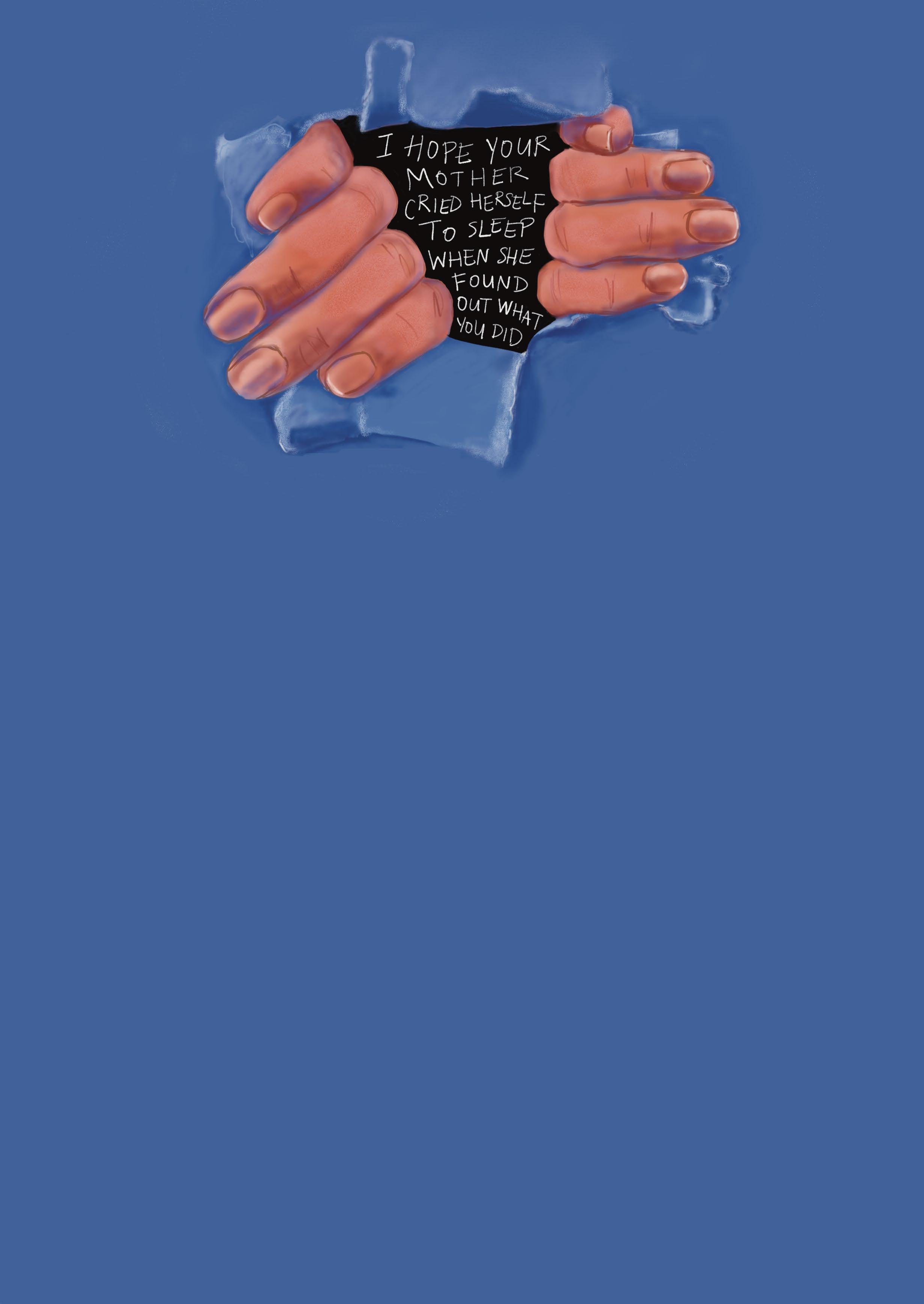
Climb inside her and tear her apart
When she leaves you will she still feel you in her stomach and her chest?
Taste your blood on her lips?
Metallic like the ring you want her to have too small for her finger — it’s turning purple. And eventually she’ll cut it off
More courage than I ever had. Heard your voicemail more than my ringtone
Anger hits months later
You’re off playing happy families
I’m screaming at the mirror
I’m sleeping in my bed alone
I’m scraping what’s left of you out of me
You were a good partner and a bad man or so I’m told
If I say it enough maybe it’ll stick
Two years of keeping you warm caked soot in my lungs
I hope it was worth it
I hope your mother cried herself to sleep when she found out what you did
I hope she looks at you and sees your father
Realises she failed to make you a man
I hope you couldn’t bring yourself to say you were unfaithful
That the words stuck thorns in your lungs
Her hands burnt on your skin
I hope the first time you fucked her you cried
47.
Art by Angel Du
Art by Angel Du
Local Trans Person Doesn’t Have Time for Your Bullshit Questions
Charlie Aleksander
We’ve accepted that there is no clear cut explanation for a person’s sexuality – yet I feel an insistent need to come up with a grand, well thought-out answer every time I’m asked, “so how did you know you were trans?” Otherwise, they’ll respect my ‘credentials’ less. You get brownie points if you knew since puberty, but the kicker of an answer is if you knew something was up since you were a toddler. People think that because gender expression is more ‘public’ than a person’s sexuality, that this somehow gives them an all-access pass to ask whatever they want. Transitioning is no longer a personal problem, but also an incredibly public journey in your attempt to assimilate into cisgender society – you must constantly dress to impress.
Want to dazzle cis people? Talk to them about how “transgenderism” (they love that word) is actually founded in chemical imbalances in a person’s brain (they respect this explanation more than any other). They don’t care about you and your experiences, they ask why so they can assess the reasons you give. If they must address you correctly, then they must have a say, right? Want to dazzle your fellow trans people? Talk to them about how planned and thought out your hormone and surgery goals are (it’ll show you know your stuff).
So where does that leave me? All other trans people are real, yet I’m some awful fraud because I don’t have a superhero origin story? Maybe I’m making a big deal out of nothing. Maybe this is all just a melodramatic attempt to pretend as if I’m not at all different from a cis person, and I’m blaming other people’s ignorance to do it.
But it’s not just me. It’s a world of trans people navigating a pandemic of transphobia whilst also trying to remain authentic to themselves. In an environment in which I can’t control how my transition is perceived by society – I must at least control my own narrative (in this case, my explanation to others as to why I’m trans).
The few words I muster up every time I explain my transition could have the ability to help people understand me better. But will it ever actually make space for me, and other trans people, in any meaningful capacity? It’s easy to feel pessimistic about society’s ability to carve out any more space for trans people when we’re still regularly fighting for the most basic of rights – or for our parents to understand that they/them pronouns aren’t just used to refer to a group of people.
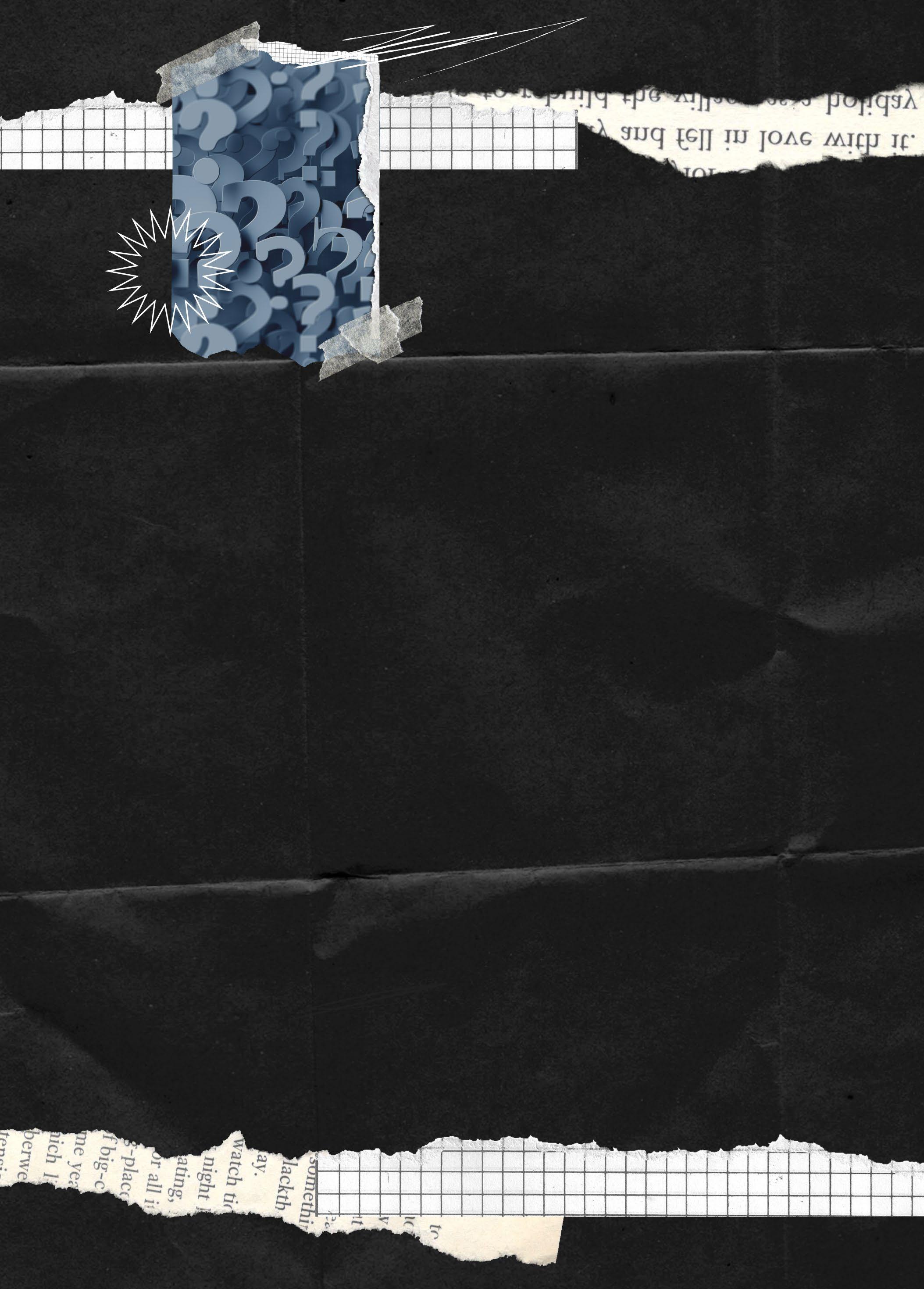
48.
I could ignore the rapid rolling back of rights for trans people across the US or the harmful rhetoric which threatens my future access to healthcare (as has happened in the UK) – pretending that society’s acceptance of trans people is an ‘abstract’ issue which isn’t currently threatening me personally. But what about how this affects my daily life? How I struggle to find a place in my college sports team because the ANU doesn’t know how to address people medically transitioning. How my friends think it’s okay to talk about my transition to other people for me because ‘it’s not like I’m hiding it’.
Once you become used to feeling like you have no place – like your very existence is a scandal – it’s easy to start feeling like you’re asking too much of the people around you. I can’t help but feel that acknowledging my identity demands more out of the people I interact with, beyond that of a cis person. My resolve to correct people when they slip up has withered away as I start to feel it has become all too trivial – I’m demanding too much, I tell myself. The politeness of the oppressed meets the timidity of the constantlyquestioned. Every correction I make I remember that this struggle is unique to me - the average person has no reason to care about the intricacies of my identity and how it should affect their treatment of me. I worry if I push too much, I’ll simply push them away. Why should they be forced to put extra time and consideration into things they would otherwise pay no mind to? If the toss up is between vigilantly correcting everyone I interact with or just pretending I’m nonchalant enough to let it not affect me – I’ll just let them assign me whatever pronoun they see fit.
After all of this I’m left too exhausted to genuinely make time for myself as opposed to simply making space for myself. I don’t have time for any of this. Transitioning is exhausting. I’m expected to go through puberty twice, reinvent myself from the ground up, and justify this whole process to people who will never understand the point of it all. At the end of the day, I’m left with two options – speak up for myself and for other trans people every time the situation warrants it… or shut up and stick firmly to my comfort zone.
If I make time to speak up for myself – being trans, and being the guy who talks about it, is all I’ll ever be known for. You transition to escape the confines of imposed gender, only to be consumed by your new identity… trapped in freedom. If I let everything slide from now on – I’ll continue to make myself feel ashamed about something that is inherent to who I am.

I’m at a crossroads.
All of this pessimism would draw me towards keeping silent and suppressing all my misgivings. But, I have to keep hopeful in the knowledge that I’m not alone in this. By continuing to be unashamedly authentic to myself, no matter how public and vulnerable of a process that may be, I hope to work for a society that has enough space for people like me. In showing gratitude for the trans people who came before me to make it easier for me to exist in the way that I do, I can only hope that my openness will make it easier for those who may come after me. There really is no going back now.
I hid away from myself for so long, it would make no sense for me to come out only to hide from the world once again.
49.
Art by Angel Du
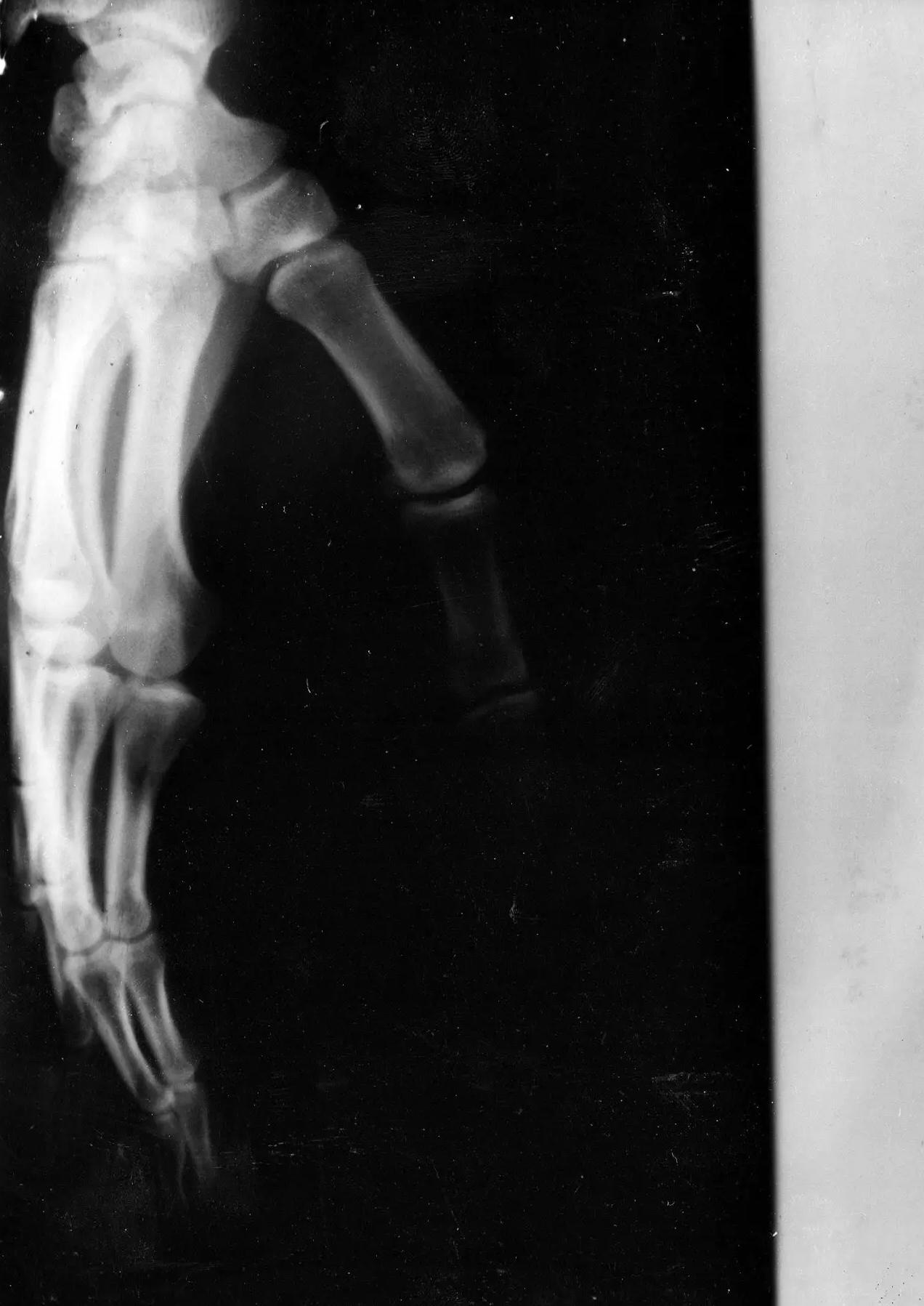
50.

51.
Art by Cynthia Weng
An ANU Confession
Marlo McClintock
With silver cross
Translucent veins
Dissecting each movement
Each ventricle shift,
I have borne my soul on linen sheets Drops of blood that spit and spoil
I have torn my chest
Itched and screamed
Laid alone under red light felt their immovable shadow.
Midnight routine.
The tap that drips and dribbles
gentle caress, tangled awkward hands.
A smothering silence
Heart beats like boiling water
Skin that merges into my own
A mind that wonders

An eye once fixed on me
Now wet and glazed
We pass each other
On green lawns
Between deciduous trees
Through slick grey paths
And under scaffolding
In tiled cold corridors
Hedonistic pleasure
A universal odium refracted across me
I wonder if they miss her or me
our coffee and cake, our cigarettes now theirs the remnants now mine
Once thick stitched lines now frayed red hands and white fur our merging has reached its end its stained conclusion
I hear whispers of us but I crave more
52.
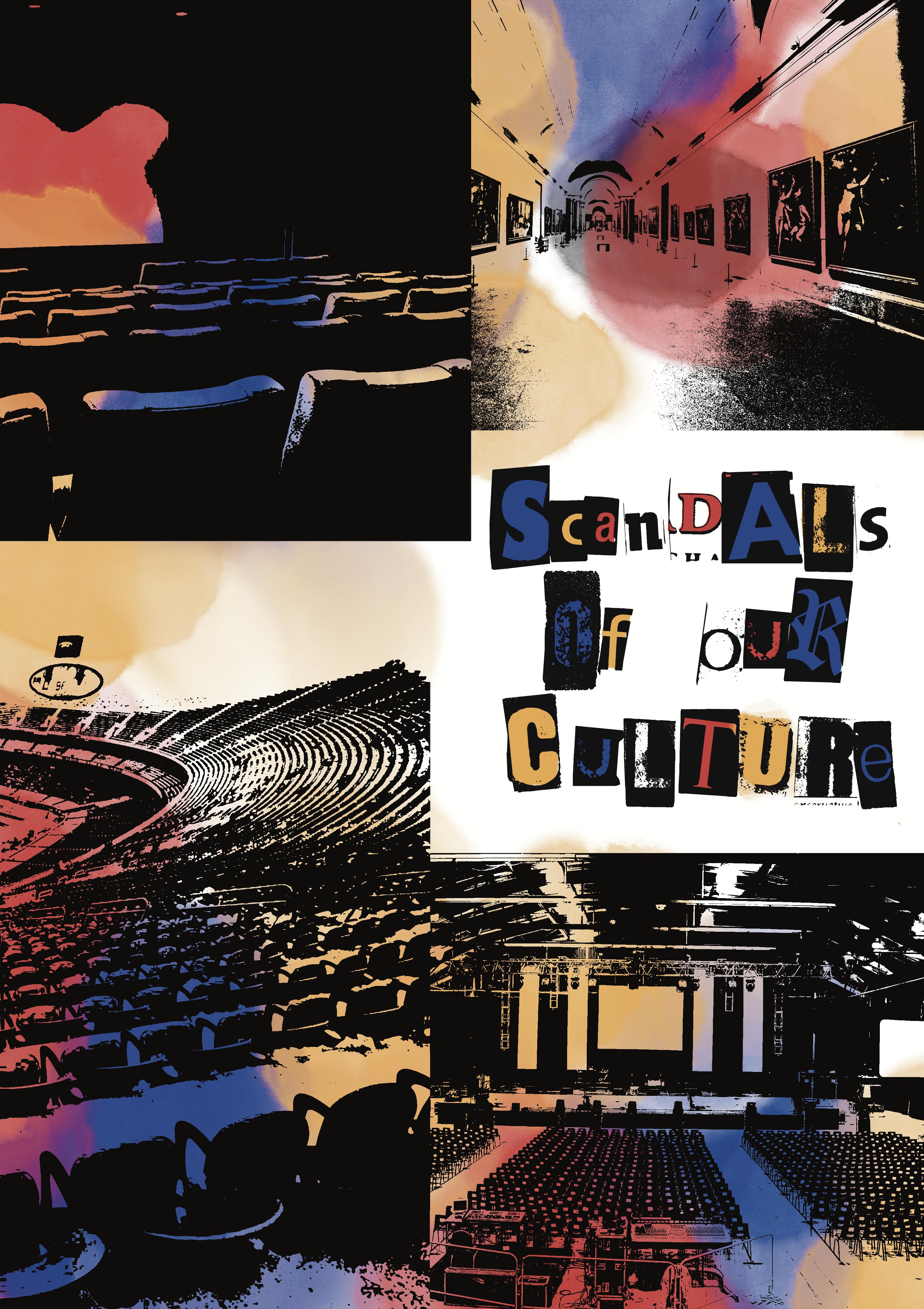
53. Art
by Jasmin Small
The Female Gaze
A completely biased and heteronormative analysis of 2000s movies and how love, intimacy and affection are translated to women-identifying people
Perpetual Nkatiaa Boadu
As a person who identifies as a woman, I have always found the concept of the female gaze intriguing. It’s a nuanced concept that articulates the small things womenidentifying people are attracted to, and I feel like it’s hard to explain without the use of examples
Firstly, I know that attraction is a completely personal thing I, for one, love toned arms, but I would never expect another person to agree The same goes for the concept of the female gaze, it is not true for everyone, but it is true for some people. For example, other characteristics I find attractive in a man are a nice smile, being soft and kind to the people around them, respecting boundaries, and being kind to animals These are all qualities that I could say intersect with this concept of the female gaze, but before we delve into that, let’s define the male gaze
Since I am using 2000s movies as an example to explain this concept of how people define attraction, for the male gaze let’s look at Mr and Mrs Smith. Mr Smith is considered attractive because he is viewed as a strong alpha male and brings that energy to his dynamic with Mrs Smith He has spy expertise, and is also viewed as attractive because, well, he is played by Brad Pitt
In comparison, the female gaze is based on vulnerability and compassion It’s about men acting as people first and having a certain restraint; whatever feelings they feel for the person they have an interest in, they will show respect first. For example, Bridget Jones’s Diary is about a woman who is looking for the perfect man She is feeling pressure from her family and society to settle down, especially since she is in her early 30s

54.
Art by Jasmin Small
I hated this movie when I first watched it Bridget is a horrible character who has few redeeming qualities To put it simply she is a complete mess, who has a lack of selfconfidence that makes me uncomfortable every time I watch the movies. Yet, her battle between Mark (Colin Firth, spoiler: the man we like) and Daniel (Hugh Grant: very much a guy you hook up with while drunk and never speak to again), really highlights the divide between the male and female gaze
When Bridget first meets Mark, he is wearing an ugly Christmas sweater that his family had most likely forced on him He comes off as awkward and very uncomfortable, especially with Bridget’s rant about her drinking and smoking. Maybe it’s because it’s Colin Firth and his silent yet warm character always comes off as attractive But it is also how he is displayed, he listens to her rant and keeps his judgement to himself The female gaze is highlighted through Mark’s kindness toward those around him, when he first meets Bridget he doesn’t like her, yet he treats her with respect and kindness Comparatively, Daniel, who is attracted to Bridget in the beginning, continuously sexualises her and uses an inappropriate tone with her, especially since he is her boss
The female gaze isn’t some benign concept, it is about a man being good, not for the benefit of himself or others, but because that is truly him It is attractive when someone is completely themselves and doesn’t change to lure in a woman In Serena Smith’s article, Men Don’t Understand What Women Find Attractive, she highlights how men often see women in a more physical way
For example, last year when I was in my clubbing phase, I noticed that while girls looked at men they found attractive, they didn’t immediately go up to them, they looked to see how they interacted with their friends and the women around them Of course, I know there is a layer of protection and safety there, but most women had a conversation with me similar to this:
“Omg he is so cute!”
I’ll respond, “Why don’t you go up to him and say ‘hi’?”
They’ll often reply with a nervous, “‘Uhh I’m not sure, I just don’t know how he will act I am just watching him to see his vibe ”
This theory of the female gaze seeing ‘people as people’ is embodied in Bridget Jones’s Diary when Mark comes over to help her make dinner for her friend’s birthday Bridget absolutely sucks at cooking and after looking from the sidelines for a bit, Mark takes over and helps her make the meal He isn’t mean or rude about it, he is kind and patient with her At this point, he does like her, but his personality shows how he treats those around him Similarly to the horrible sweater, he wore it because it would make his family happy.
The female gaze is more complex than how much power a man has or how many times he goes to the gym Female-identifying people want tenderness and compassion
There is a reason so many people love Pedro Pascal; he is cute, charming, funny, and more importantly, caring to those around him To many people, that is what makes a man attractive. Men believe that if they are just nice, they are deserving of intimacy, they believe if they are powerful, they are attractive. However, this expectation has ulterior motives They are like Daniel, attempting to come off as kind, but underneath it, they truly don’t have any interest in taking care of another human
Another example of a man who displays the female gaze is Jack Black in The Holiday, which, compared to the previous movie, is one of my favourite 2000s movies of all time. I do not know what draws me to it, but all the characters are so lovable and complex It’s a simple Christmas movie, it has all the tropes that a romantic lover like me completely bends to
55.
In particular, the film has the ‘stuck in a new place and ohh there is a cute guy’ trope which I love Forced proximity is a trope I am obsessed with because it makes the characters see each other at their worst, and yet they still choose to be with them Being in university means having some pretty horrible roommates I still remember my first year. It was horrible. But choosing to love someone despite their inability to wash their dishes, I believe, is the best love of all.
Returning to The Holiday, Iris (Kate Winslet), who lives in England, and Amanda (Cameron Diaz) who lives in America, swap homes for Christmas Both are going through heartbreak and decide to get away for a few week In the article, Serena Smith highlights how men assume women are only focused on their physical attributes, stating that “women on dating apps seem more likely to consider what type of person would take a dozen mirror selfies with their abs out” Maybe it is because women have been socialised to analyse and understand every situation to protect those around them After all, I have had the same experience As someone who has been on dating apps, I find it unattractive when a man only posts pictures of his body at the gym Not because they are not attractive, but because I feel uncomfortable, and assume they just want sex, not a connection
Now let’s examine this theory with the movie The Holiday, through the lens of Miles (Jack Black) I am using this example because he is not considered to be conventionally attractive Jack Black has been constantly cast in funny character roles, but because The Holiday was directed by a woman, I am not surprised that they saw how attractive he truly is Miles knows what Iris is going through, and even though he likes her, he understands she just needs company and a friend. Some male viewers might believe Iris doesn’t immediately like him because he isn’t conventionally attractive, but I believe it’s because Iris is still healing She knows and sees what an amazing guy he is, but keeps him at a distance because she wants to be fully healed to be with him We see that at the end she has moved on from her ex and is ready to be fully present with him, and so she kisses him
To summarise, I know I am coming from a completely heteronormative perspective. People will always be more complex than we see them So my overall final note is, do not settle for something that you do not want Being at university, there is this weird narrative that this is the best you will get, or nothing better is out there It is a sad broken narrative that we convince ourselves is true Romantic comedies do make love a bit fantastical, but it shows that something amazing is out there Trust me, there are men like Mark and Miles out there, if they can pop up in 2000s movies, I am sure they exist in real life.
The article referenced in this article can be found via the below QR code.

56.
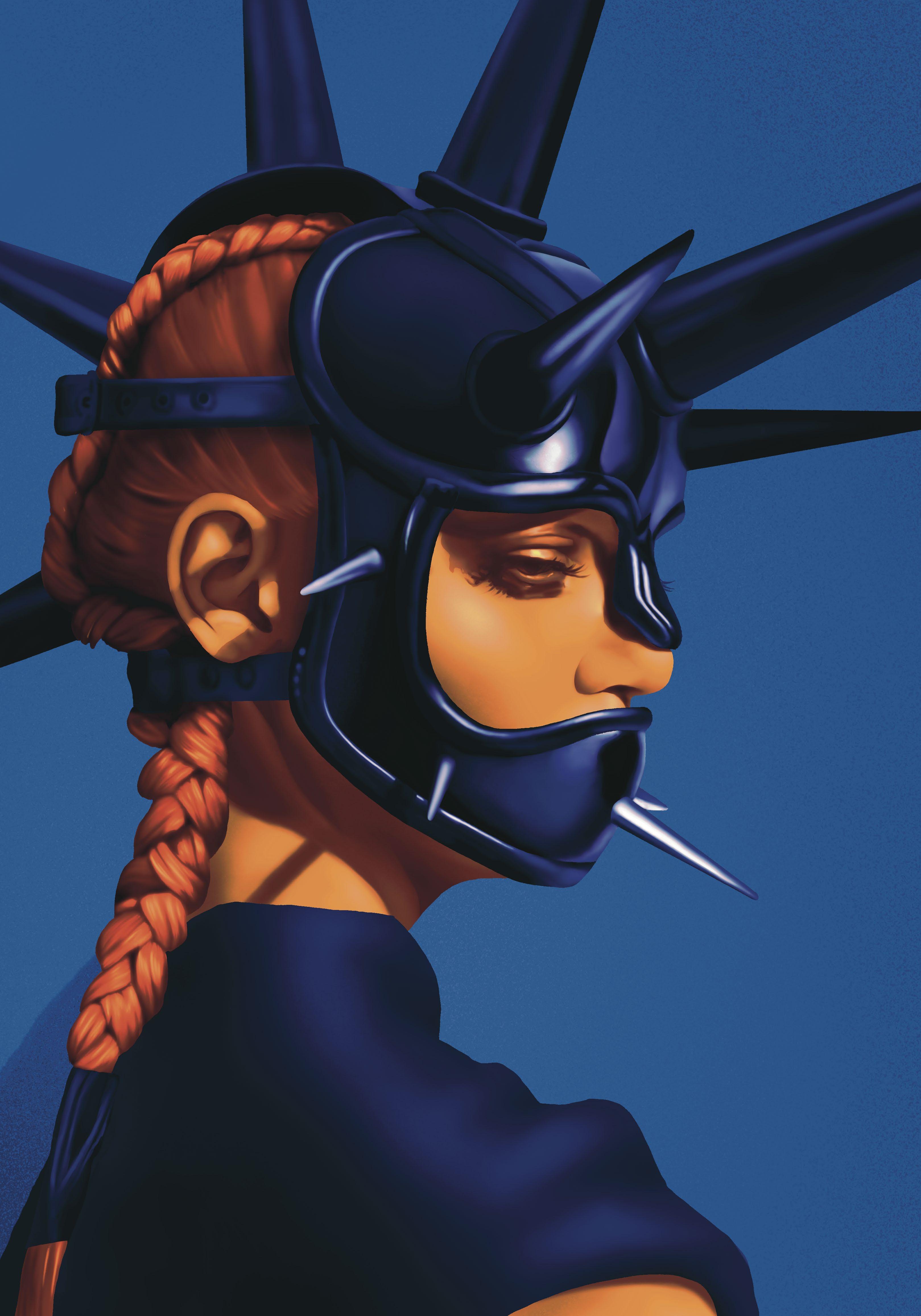
57.
Art by Jasmin Small
Don’t Forget Her Aala Cheema
Content Warning: Mentions of rape
Lana Del Rey’s ninth album is an extremely introspective exploration into family, life, death, and loss. A coalescence of alternative pop, R&B and Americana, the sixteentrack album cements Del Rey’s status as one of the most talented lyricists of her generation.
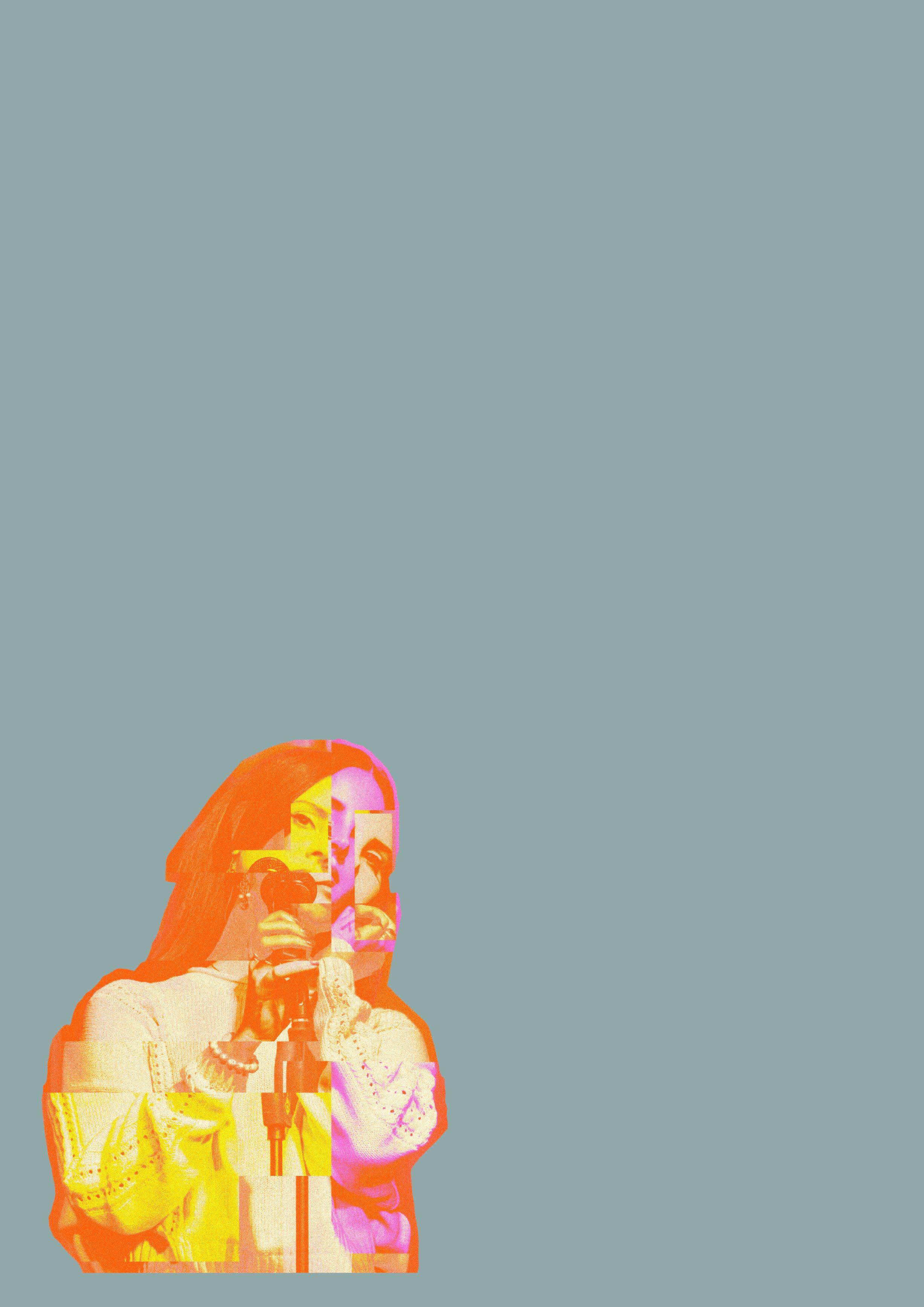
Lana Del Rey’s album, Did You Know That There’s a Tunnel Under Ocean Blvd, was released by Polydor Records on the 24th of March 2023. The album features collaborations with Jon Batiste, SYML, RIOPY, Father John Misty, Bleachers, and Tommy Genesis. It diverges from Del Rey’s signature ruminations on romance and Americana to dissect her childhood memories and familial relationships, which have recently been stained with grief.
The album opens with ‘The Grants’, fittingly titled after the singer’s family name. The song intersperses thematic ideas of family, religion, death, and the existence of an afterlife. Del Rey’s enthralling vocals are supported by a background gospel-choir and a slow piano, creating an ethereal effect. In the chorus, she sings of the power of memory: “My pastor told me when you leave, all you take / Oh-oh, is your memory / And I’m gonna take mine of you with me.” The song ends with the memories most cherished and precious to Del Rey: “My sister’s first-born child / I’m gonna take that too with me / My grandmother’s last smile / I’m gonna take that too with me / It’s a beautiful life / Remember that too for me.”
In the titular track and the lead single, ‘Did You Know That There’s a Tunnel Under Ocean Blvd’, Del Rey refers to the Jergins Tunnel, which was built in 1927 to provide pedestrians with safe passage to Long Beach. Since its closure in the sixties, the underground passageway has faded from public memory. Del Rey muses about when the public will discard her in the same way. She also samples Harry Nilsson’s song ‘Don’t Forget Me’, singing, “When’s it gonna be my turn? / Don’t forget me / When’s it gonna be my turn?” The lyrics ululate low self-esteem: “Open me up, tell me you like me / Fuck me to death, love me until I love myself.” She also despairingly addresses the body-shaming she has recently received for daring to eclipse the youthful body of her twenties: “I can’t help but feel somewhat like my body marred my soul.” The lyrics are captivating, Del Rey’s slow and punctuated vocals are alluring, and accompanied by the piano, create a beautiful and poignant ballad.
58.
Art by George Hogg
‘A&W’, which is a covert abbreviation for ‘American Whore’, interpolates one of Del Rey’s own songs, ‘Norman Fucking Rockwell’. The seven-minute track traverses through complex concepts which are quintessentially Del Rey, including drug abuse, toxic relationships, self-esteem, and Americana. She challenges the cultural attitudes towards sexuality and rape, and expectation for victims to be ‘perfect’, asking: “If I told you that I was raped / Do you really think that anybody would think / I didn’t ask for it? I didn’t ask for it / I won’t testify, I already fucked up my story.” She then transitions to singing from the perspective of the other woman, which is a recurrent motif in her discography: “Puts the shower on while he calls me / Slips out the back door to talk to me / I’m invisible, look how you hold me / I’m invisible.”
‘Fingertips’ tethers between poetry and music; its stream of consciousness style lacks rhyme or structure. Del Rey’s vocals are supported by strings and the electric piano. She examines recent tragedy in her family, her fractured relationship with her mother and her feelings towards motherhood. She sings of her uncle’s suicide, reliving the moment she was told of his death: “I couldn’t handle it, I was in Monaco / I couldn’t hear what they said on the telephone / I had to sing for the prince in two hours / Sat in the shower / Gave myself two seconds to cry / It’s a shame that we die.” The song then transitions to her qualms with her mother, asking, “What kind of mother was she to say I’d end up in institutions?” She debates her own abilities to be a mother: “Will I have one of mine? / Can I handle it even if I do? It’s said that my mind / Is not fit, or so they said, to carry a child / I guess I’ll be fine.” She ends the song with immense relatability: “I give myself two seconds to breathe / And go back to being a serene queen / I just need two seconds to be me.” ‘Fingertips’ is my favourite track on the album because of its perfect dissection of the irregularity of life and its painstakingly surreal depiction of suffering.
The last three songs of the album are, as The New York Times describes, less existential. This illustrates the “perfect distillation of the duality that makes Del Rey’s 21-st century siren songs so singular.” ‘Fishtail’ incorporates synths, while Del Rey sings about her childhood with her sister, Chuck. ‘Peppers’ not only features Tommy Genesis, but samples the song ‘Angelina’, resulting in a fun pop bop. The last track, ‘Taco Truck x VB’, is a trap remix of one of Del Rey’s greatest hits ‘Venice Bitch’ with a new opening verse.
Ocean Blvd has received glowing reviews by music journalists and debuted at #1 on numerous album charts around the world. Is this Del Rey’s best album? No. But, not much can beat 2019’s Norman Fucking Rockwell! Instead, Ocean Blvd is an extremely strong album that demonstrates Del Rey’s depth and breadth as an artist; she explores complex ideas of death, family, and sorrow, thus transcending her typecast as a gritty Americana singer who only sings about sex and drugs. Del Rey’s song writing is versatile, and her voice is as alluring as it has ever been. I will not be forgetting her anytime soon.
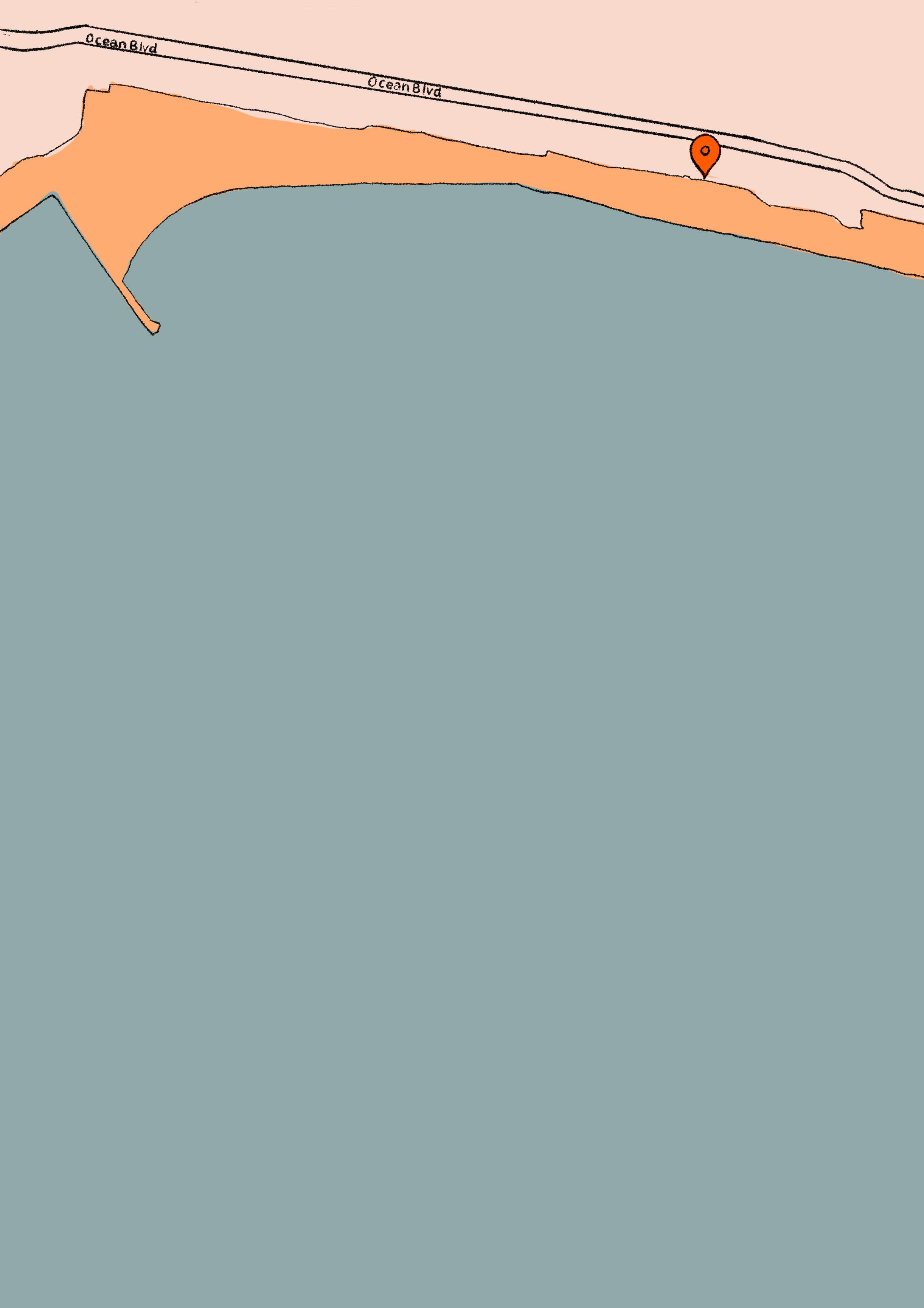
59.
Art by George Hogg
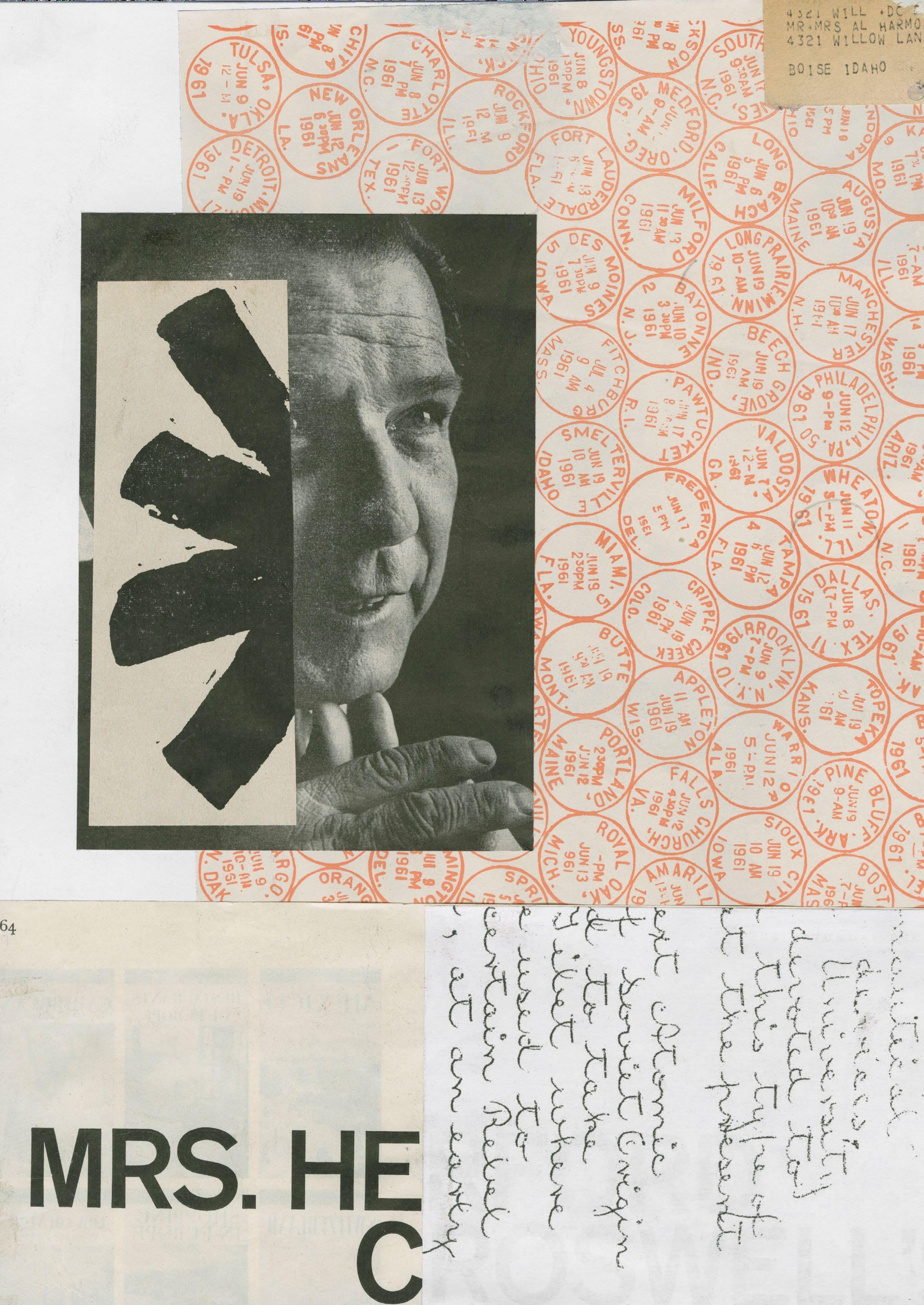



60.
Art by Jasmin Small
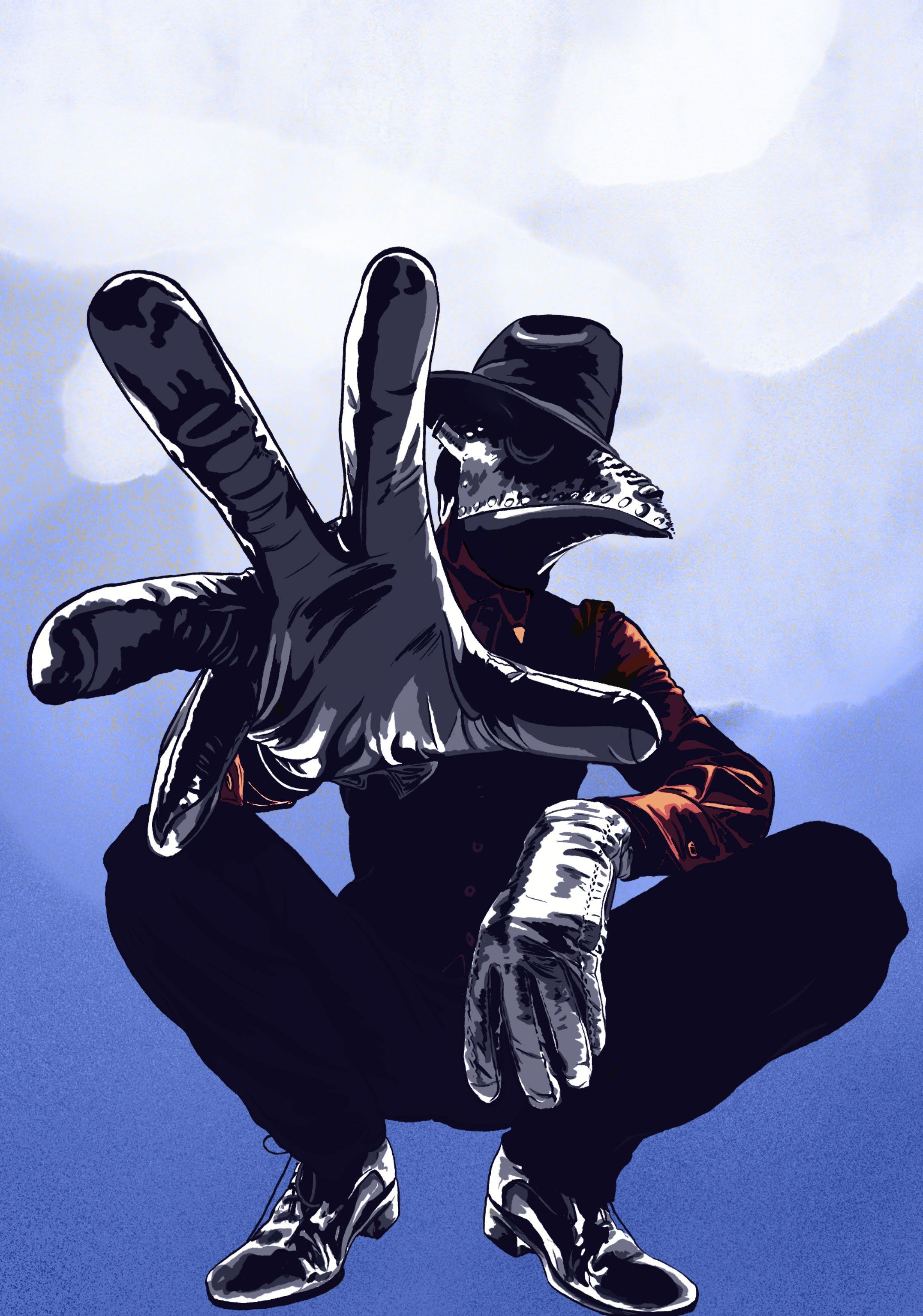
61.
Art by Jasmin Small
Art by Jasmin Small
You Can Like Metal Jasmin
Small
Getting into metal music can be difficult. Even if you are interested, its reputation for being, well, satanic, can be intimidating. However, if you are willing to look past that or even just want to give it a try, it has a lot to offer. Listening to metal music has even been shown to help with emotional regulation and reducing stress So, here is a short introductory playlist to help get the uninitiated into metal
Head Like a Hole - Nine Inch Nails
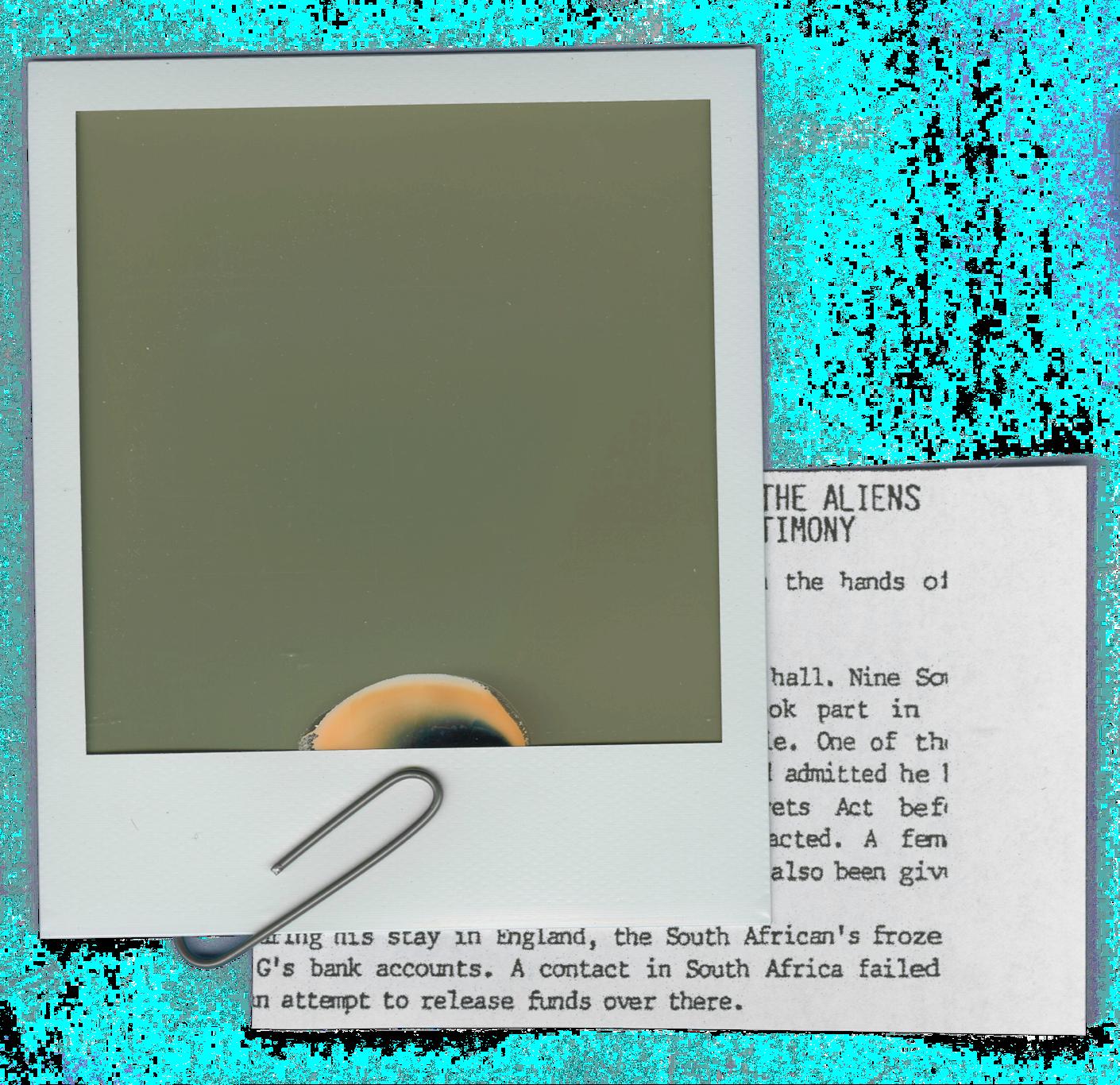
Awake - Ok Goodnight
Dark Side - Blind Channel

Holy Diver - Dio
Breaking the Law - Judas Priest
King Nothing - Metallica
Paranoid - Black Sabbath
Enter Sandman - Metallica
Cowboys From Hell - Pantera
Fuel - Metallica
Eagle Fly Free - Helloween
The Number of the Beast - Iron Maiden
Dragula - Rob Zombie
Break Stuff - Limp Bizkit
Throne - Bring Me the Horizon
KINGSLAYER - Bring Me the Horizon (ft BABYMETAL)
Grenadine - Dreadlight
Reach Out - Cheap Trick
62.

63.
Art by Angel Du

64.
Art by
Small
Punk Crossword
Jasmin
Across
2 A mini magazine
3 Jean-Michel ______
4 Velvet ________
6 The band responsible for the album, Anarchy in the UK
7 ‘Pieced work’
10 An underground feminist punk movement often associated with thirdwave feminism
12 A common tool for fastening pieces of cloth together
14 Setting of Jesus Christ Vampire Hunter
15 A 1996 film starring Ewan McGregor that follows heroin addicts in Edinburgh
16 A prefix meaning ‘against’
19 Inhalable solvents - zine

21 To pretend, to be somebody you’re not, to be part of a culture or genre just to fit in
Down
1 The name of the band with its members’ last name as its namesake
3 The deliberate altering of the human anatomy or human physical appearance
5 A hairstyle named after the Indigenous people of North America
8 The name of a band and a 2009 sci-fi TV Show
9 A method of building, modifying, or repairing things by oneself
11 Doc ______
13 Spiderpunk’s first name
17 A society without a government
18 Vivienne _______
19 _____ Spiegel
20 a flexible and durable material made from animal skins and hides
Answers will be posted on Woroni’s website
65.

64. Art by
Jasmin Small

Radio TV CONTRIBUTE News Art Content write@woroni . com . au art@woroni . com . au radio@woroni.com.au television@woroni.com.au news@woroni.com.au SSAF fully funded by
We would like to acknowledge the traditional custodians of the land on which Woroni operates, the Ngunnawal and Ngambri peoples. We pay our respects to Elders past and present. Their land was forcibly stolen, and sovereignty was never ceded.
It is essential to recognize that scandals, whether they arise in political arenas, romantic relationships, or the realm of pop culture, often emerge within the context of historical power imbalances.
Colonisation and the forcible dispossession of Indigenous Australians from their physical environments has been one of the most damaging, and destructive scandals to result from these imbalances.
Through this acknowledgment, we invite readers to contemplate the intricate connections between political, romantic, and popculture scandals and the historical and ongoing consequences of colonial practices. May this issue serve as a platform for critical conversations, fostering empathy, understanding, and meaningful change.
The name Woroni, which means “mouthpiece”, was taken from the Wadi Wadi Nation without permission. Consultation with First Nations people suggested that Woroni continue to use the word, provided we acknowledge the theft, and continue to strive for better reconciliation in future. Woroni aims to provide a platform for First Nations students to hold the University, its community, and ourselves accountable.
This land always was, and always will be, Aboriginal land.
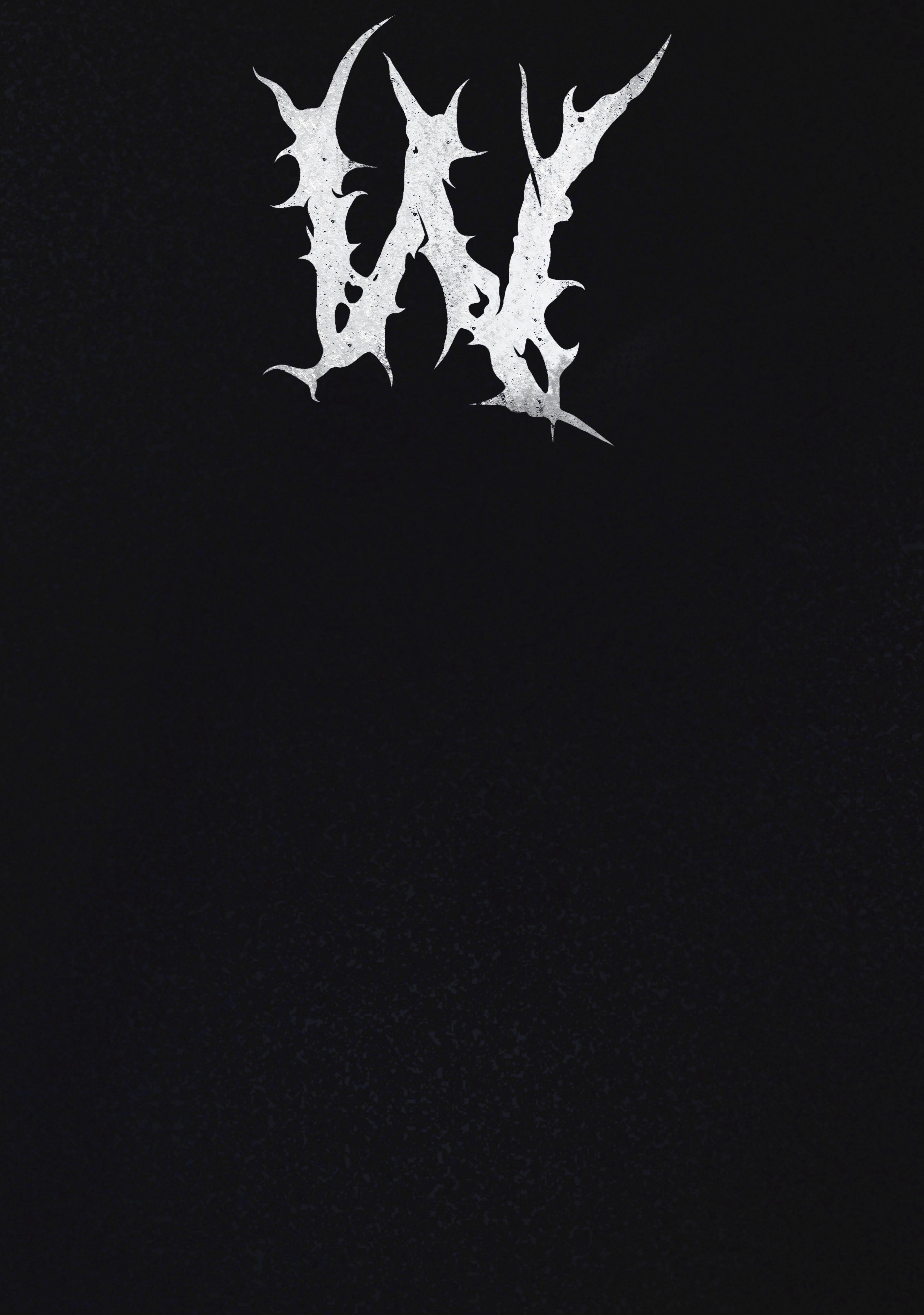















































 33.
Photos from the Woroni Archive
Art by Cynthi Weng
33.
Photos from the Woroni Archive
Art by Cynthi Weng






































